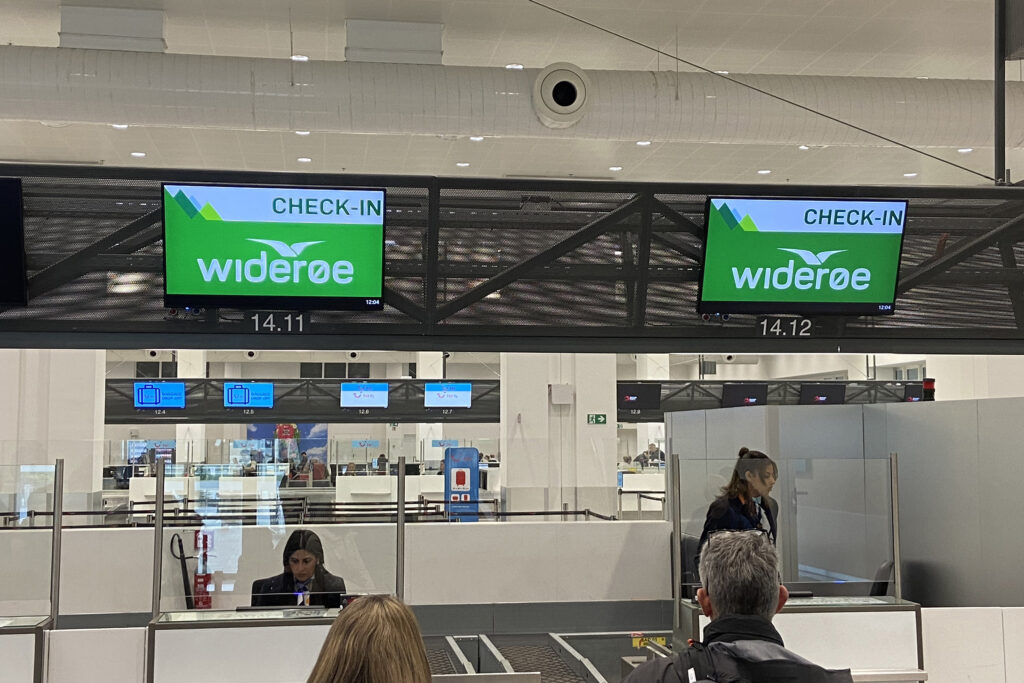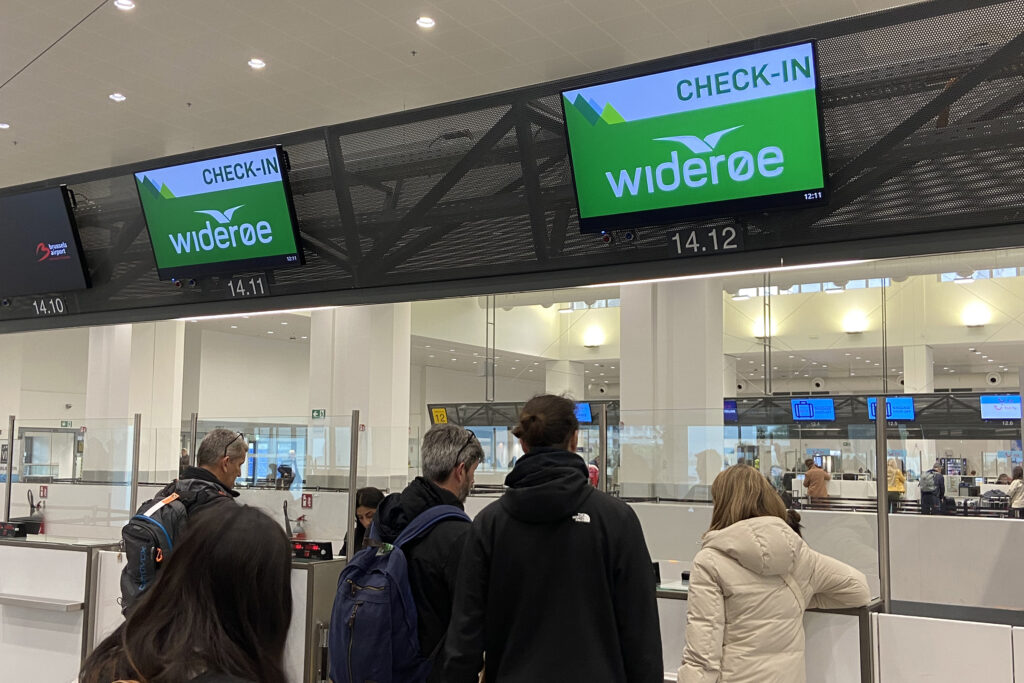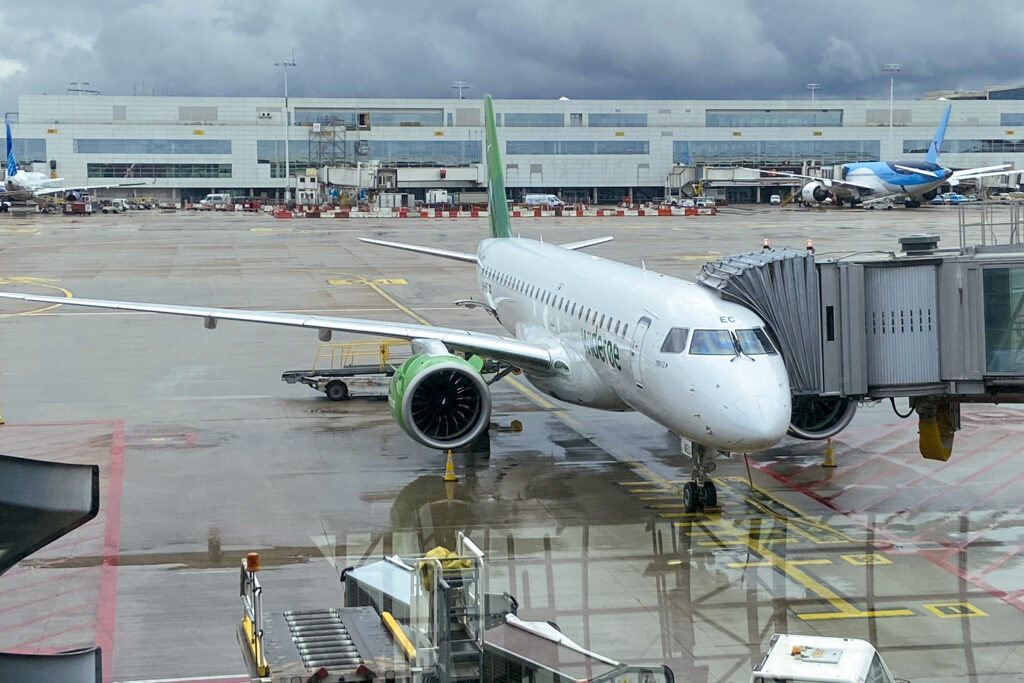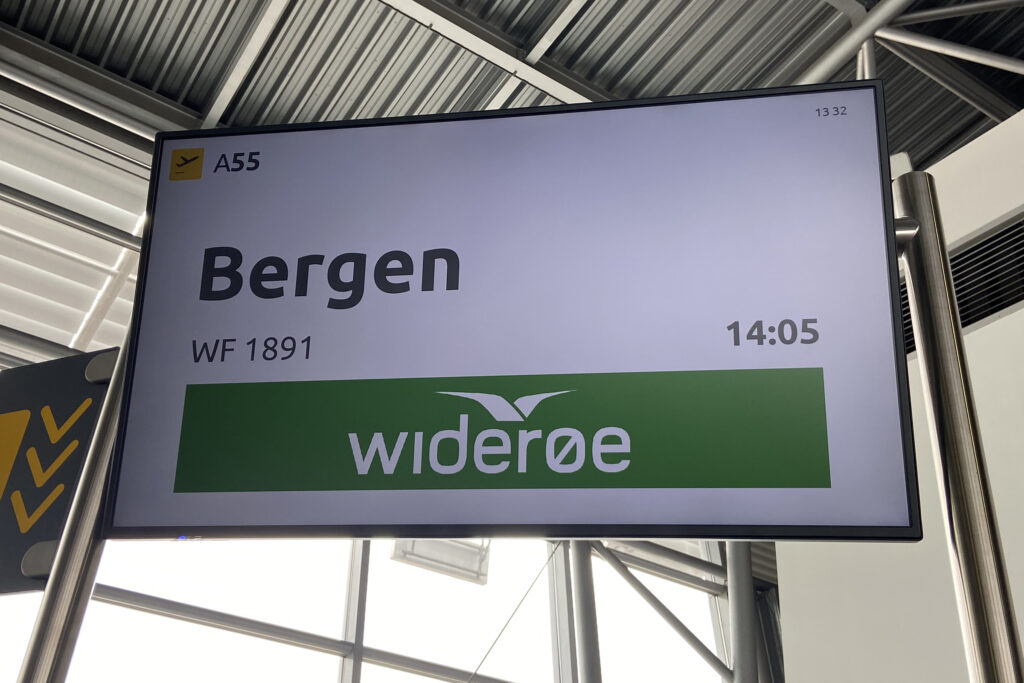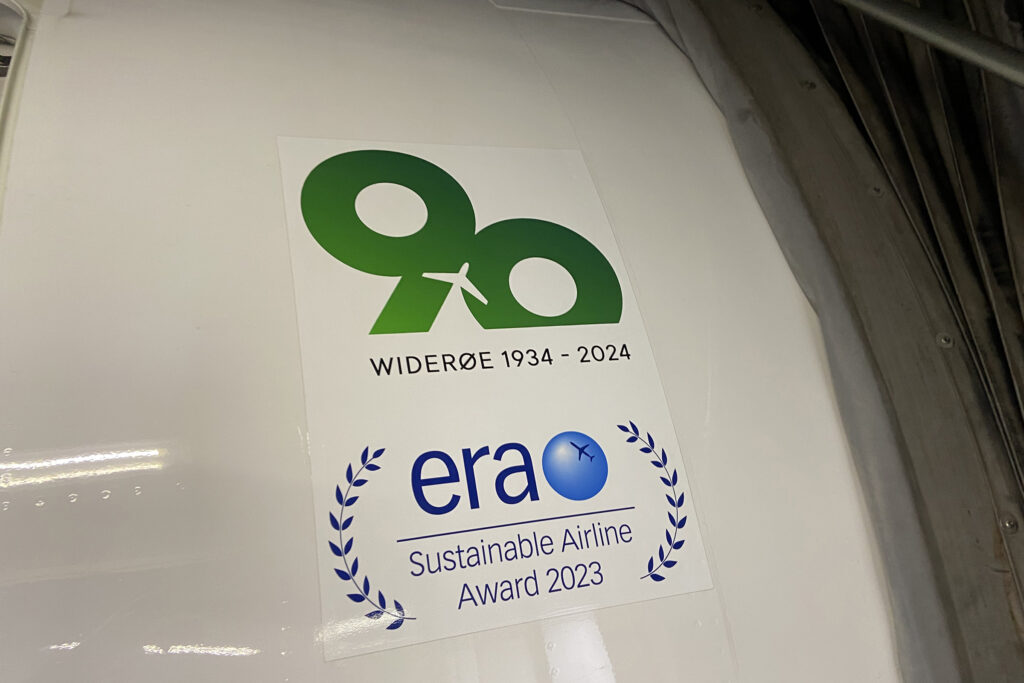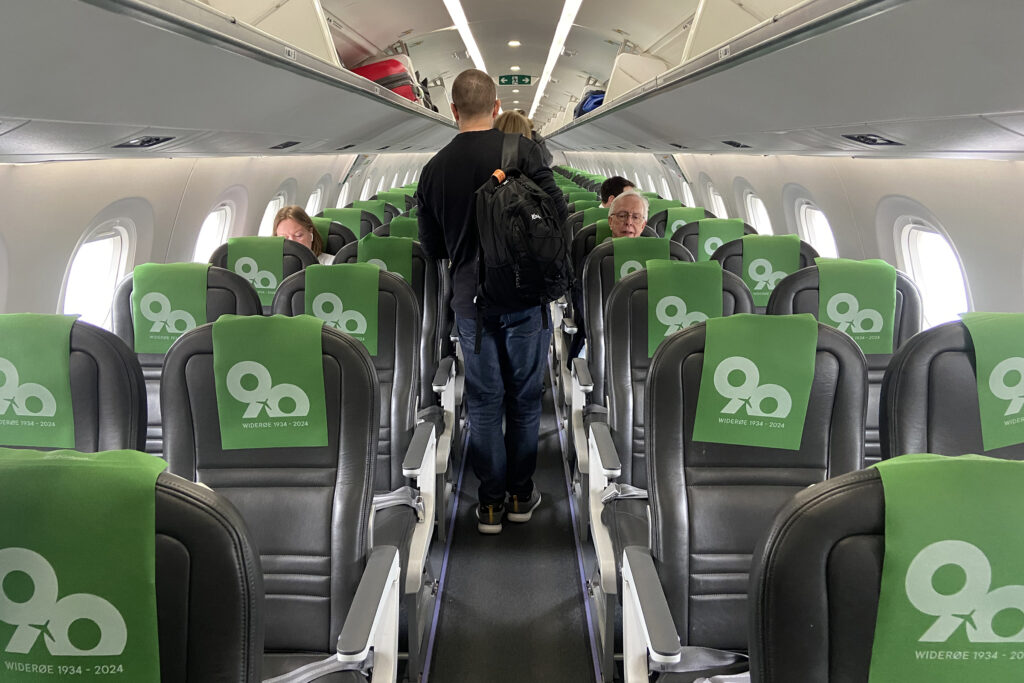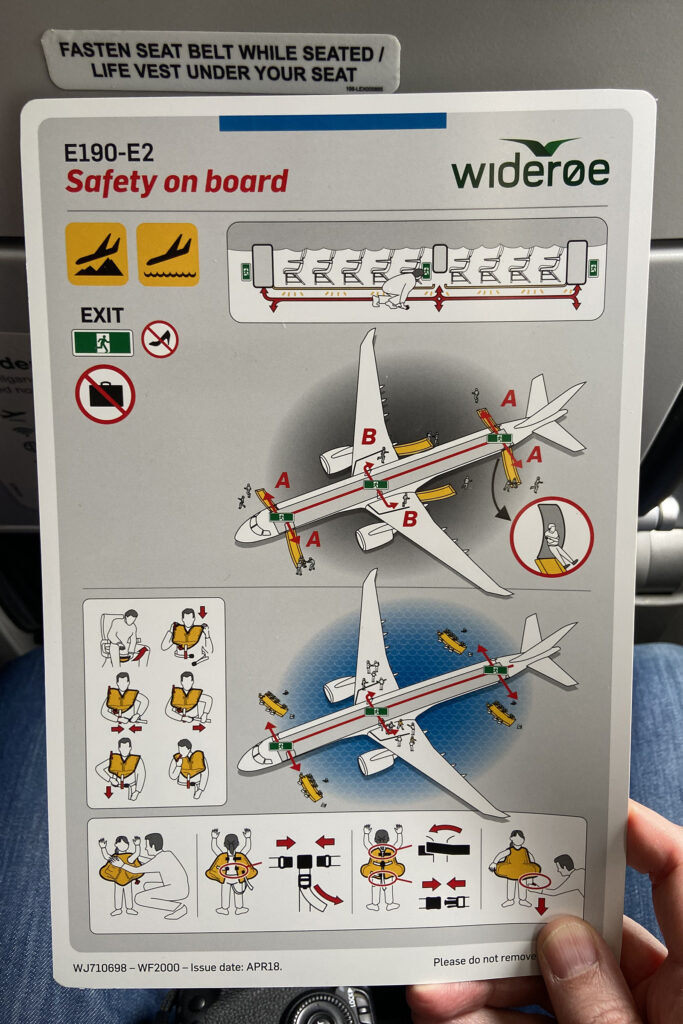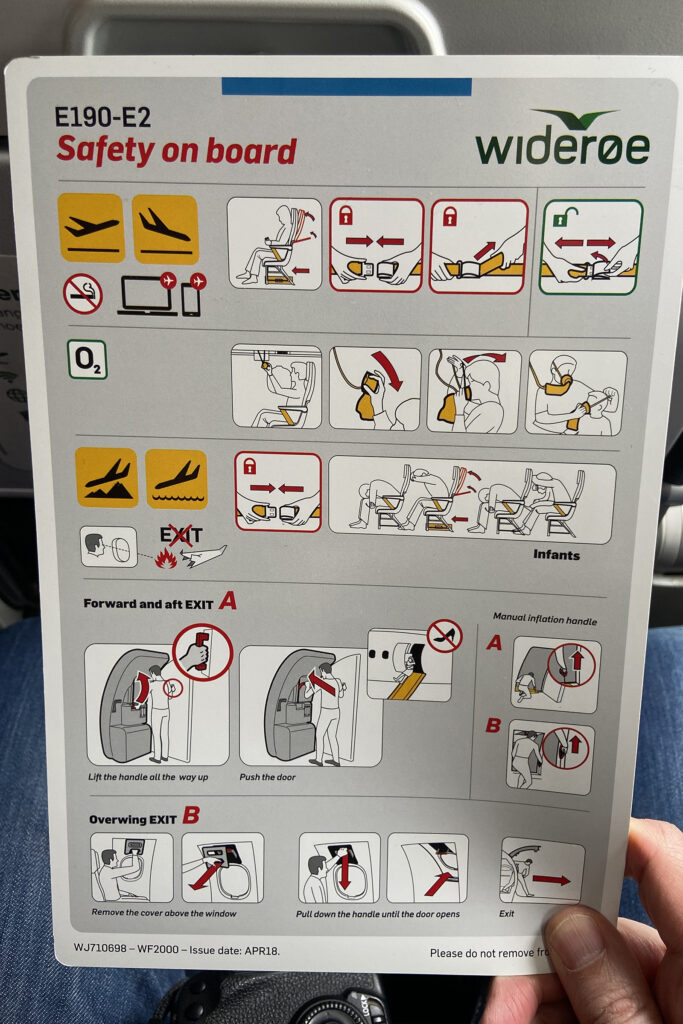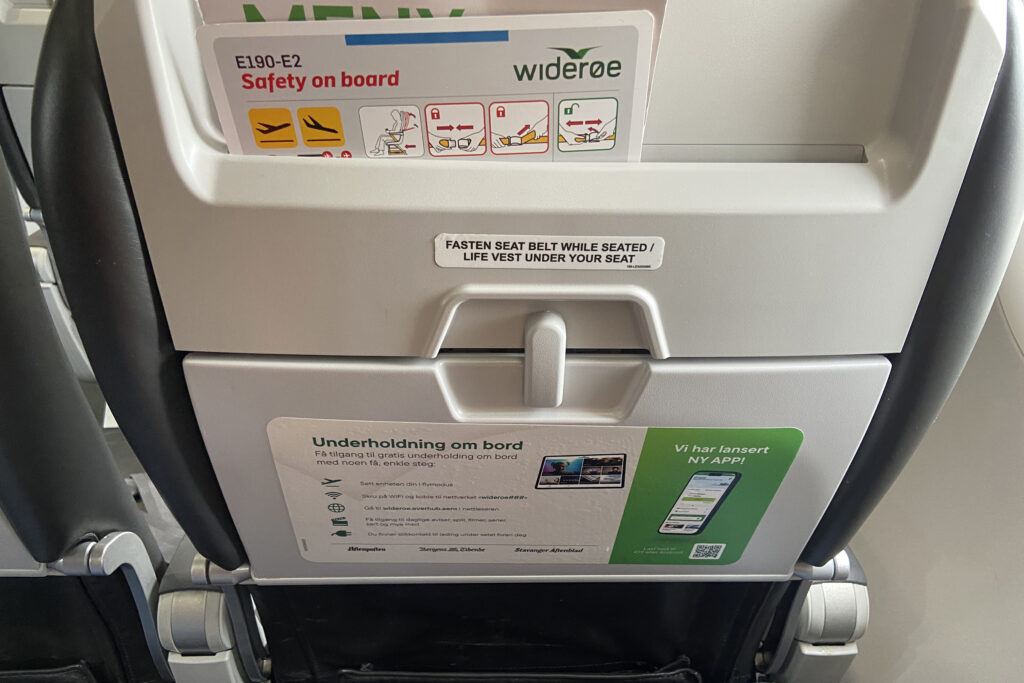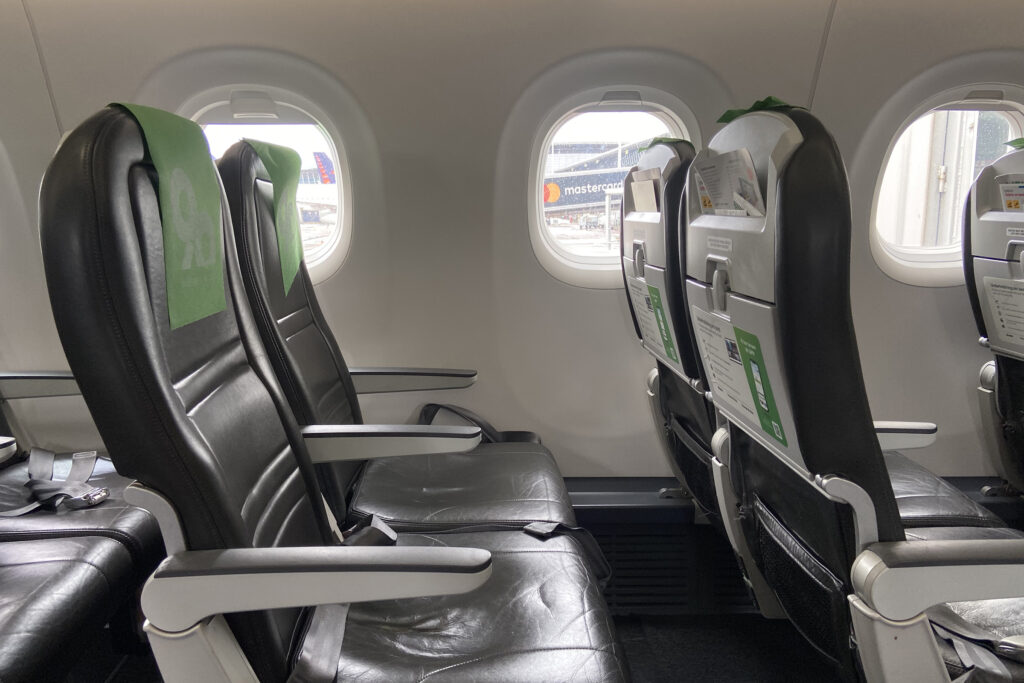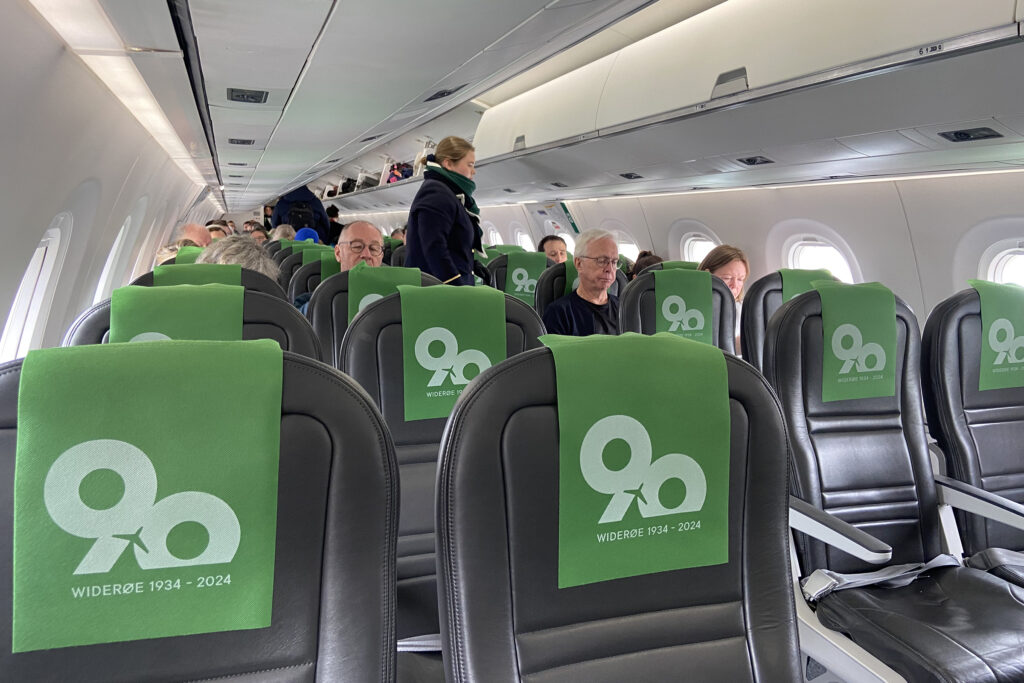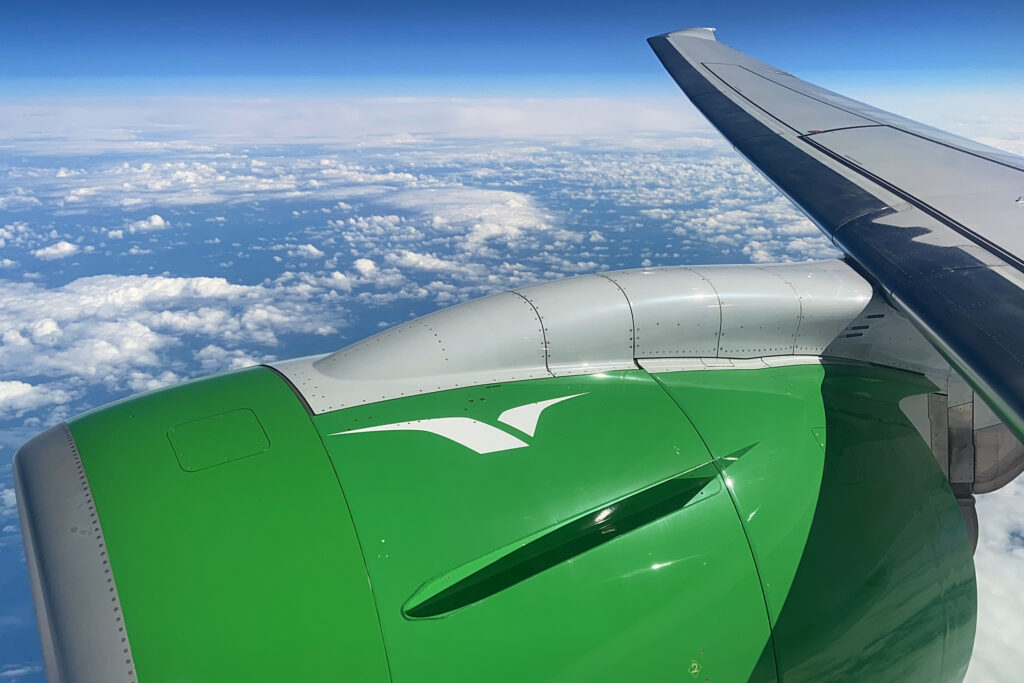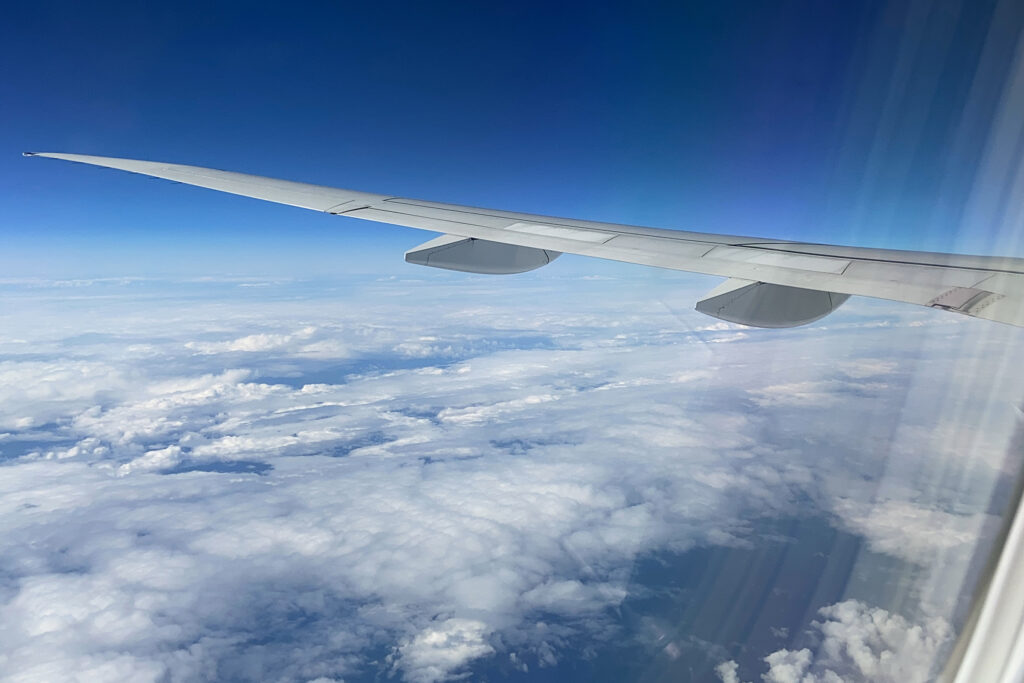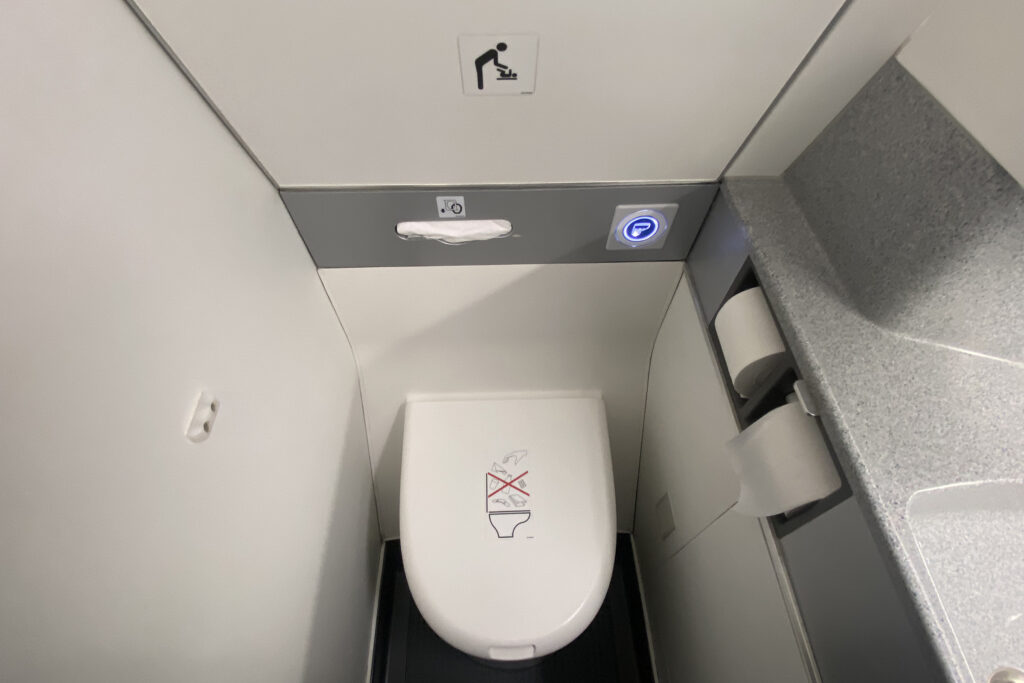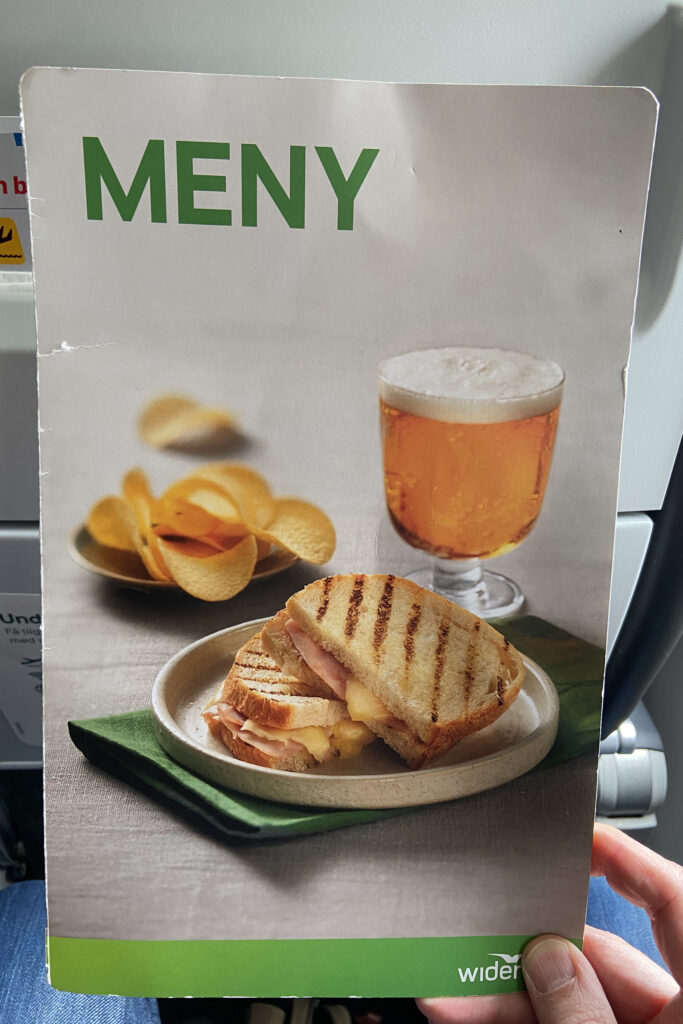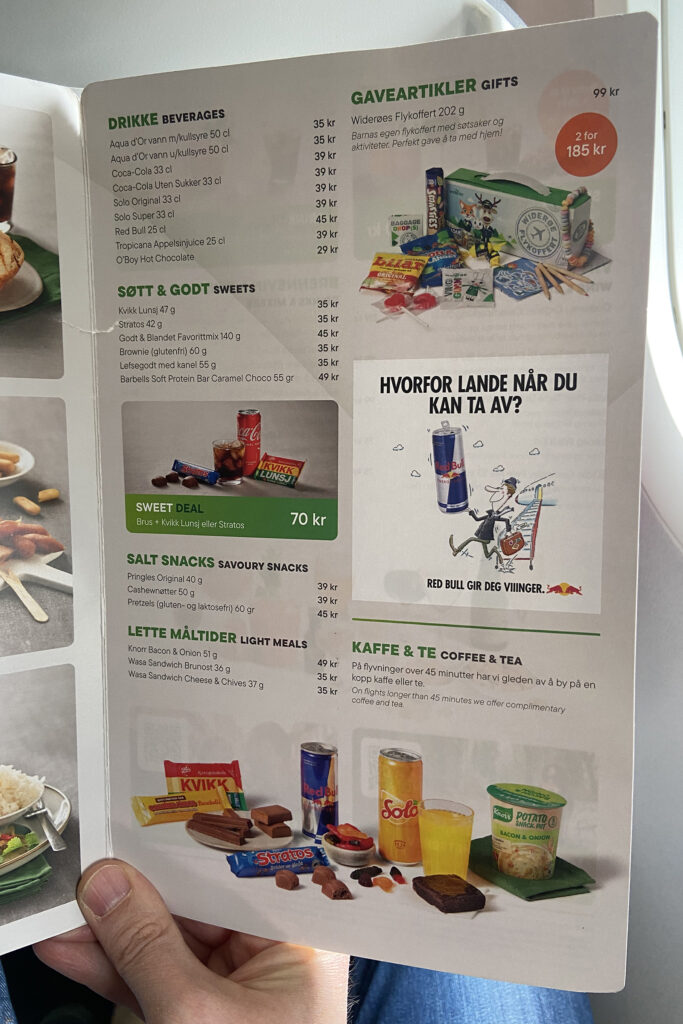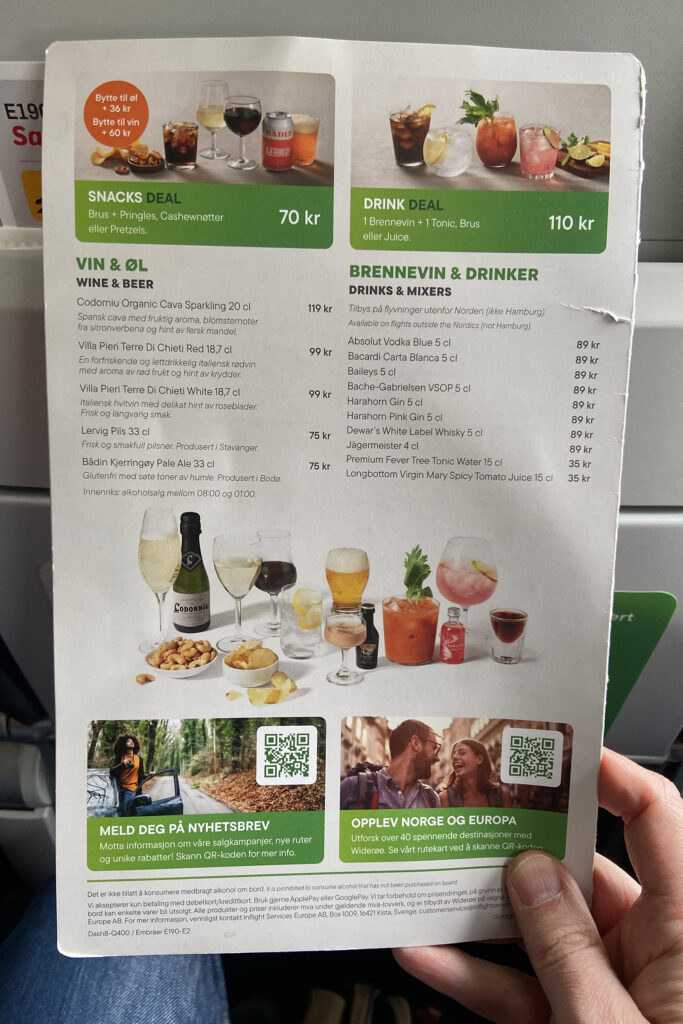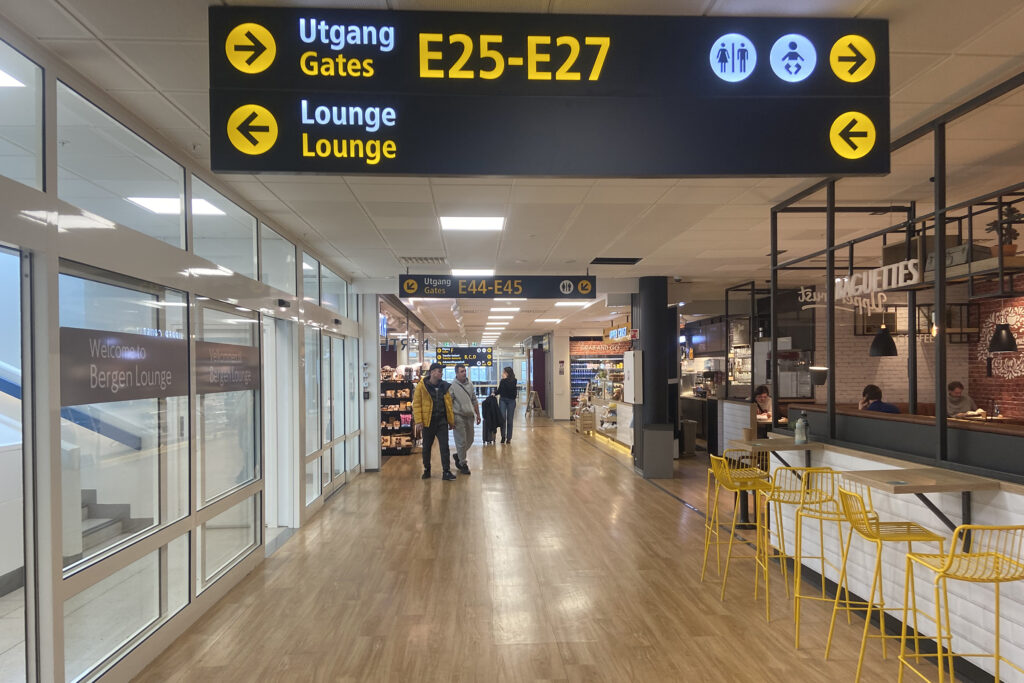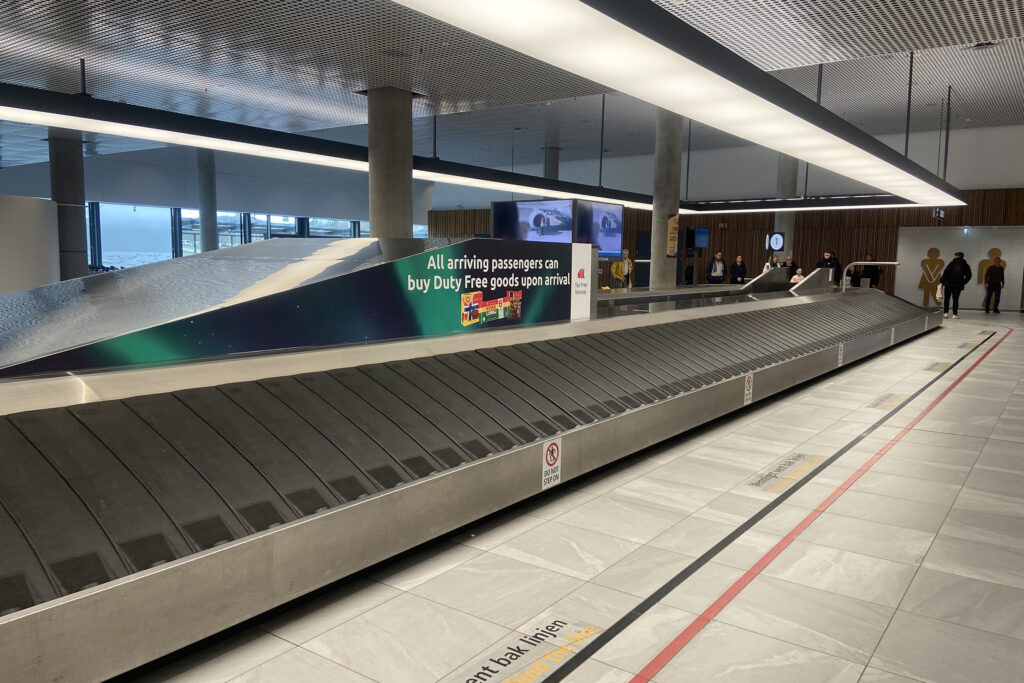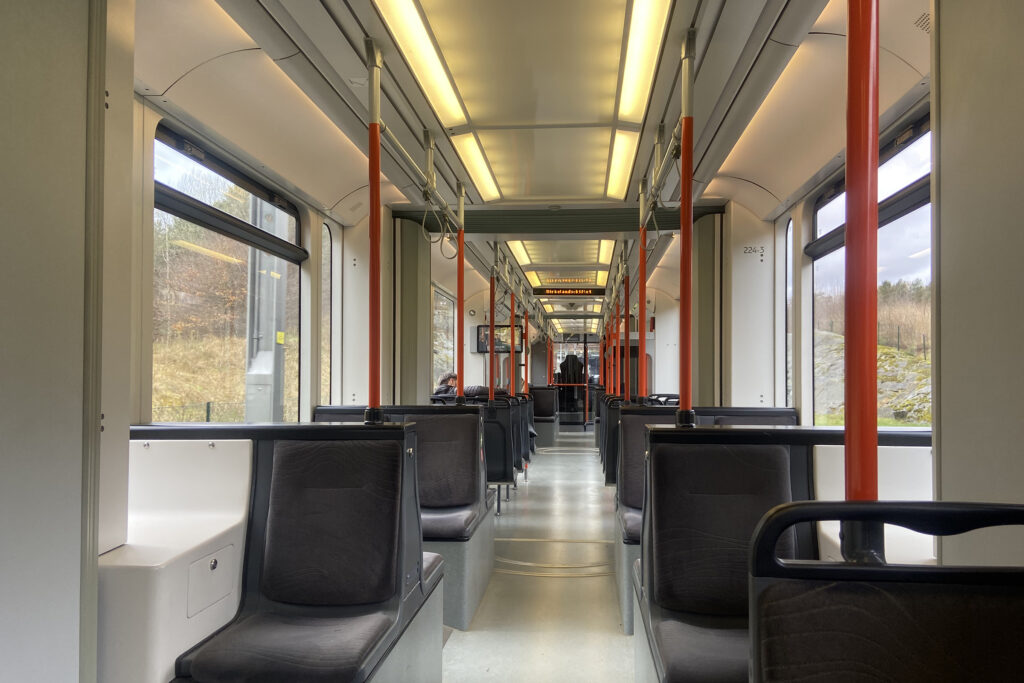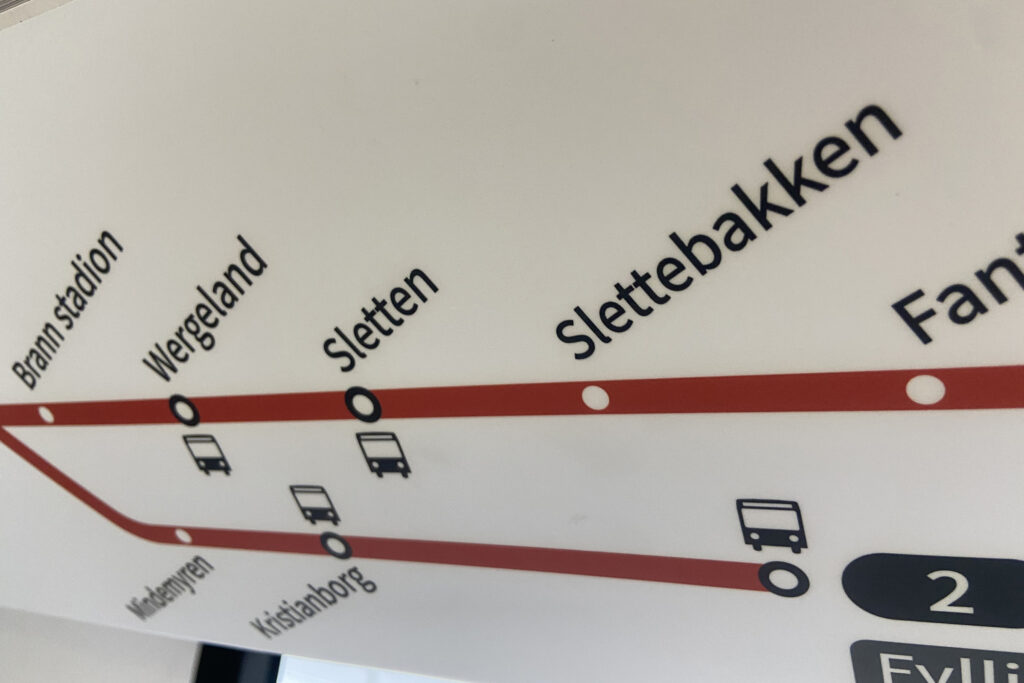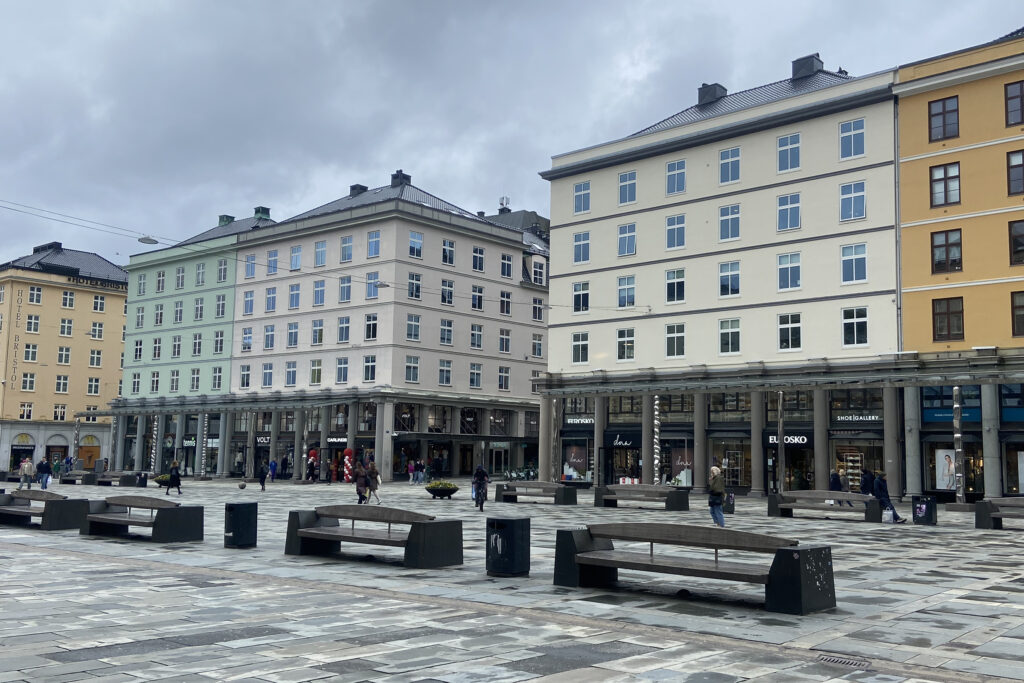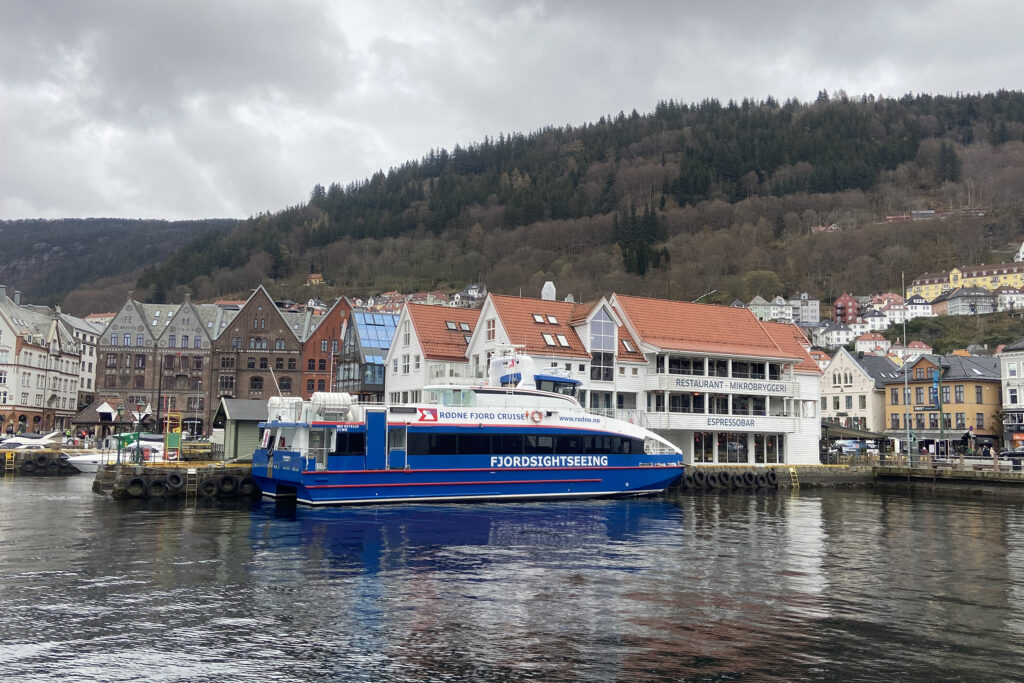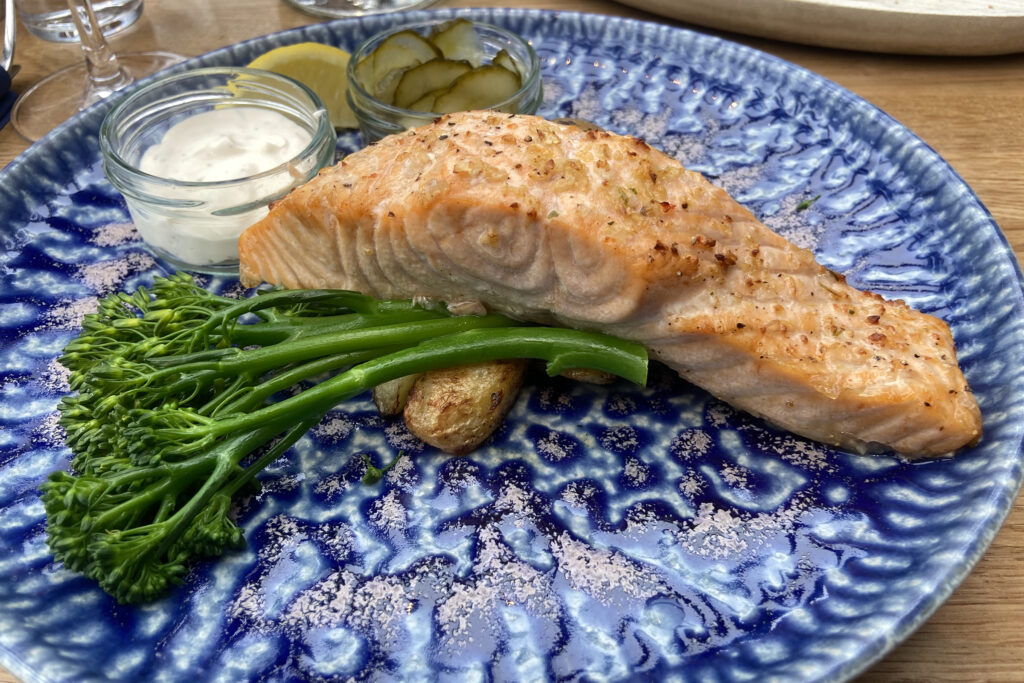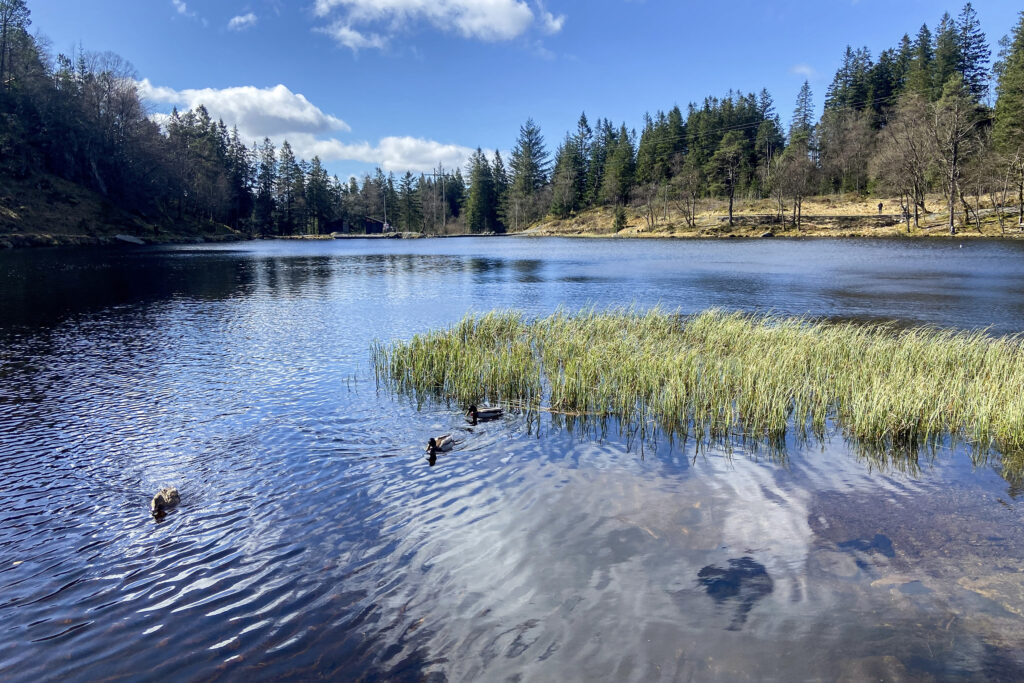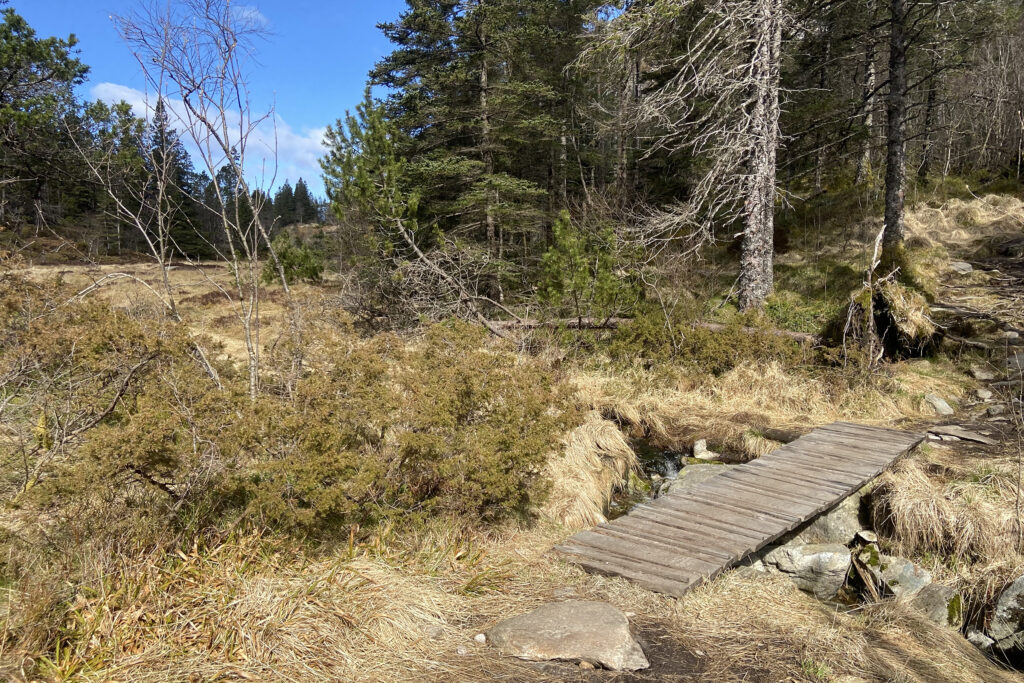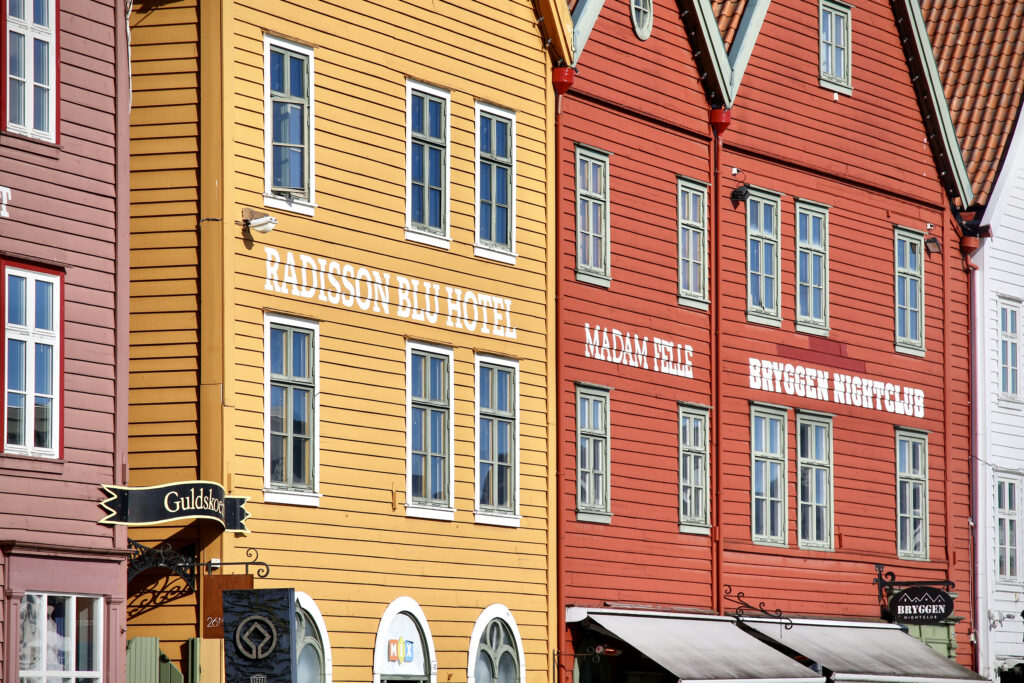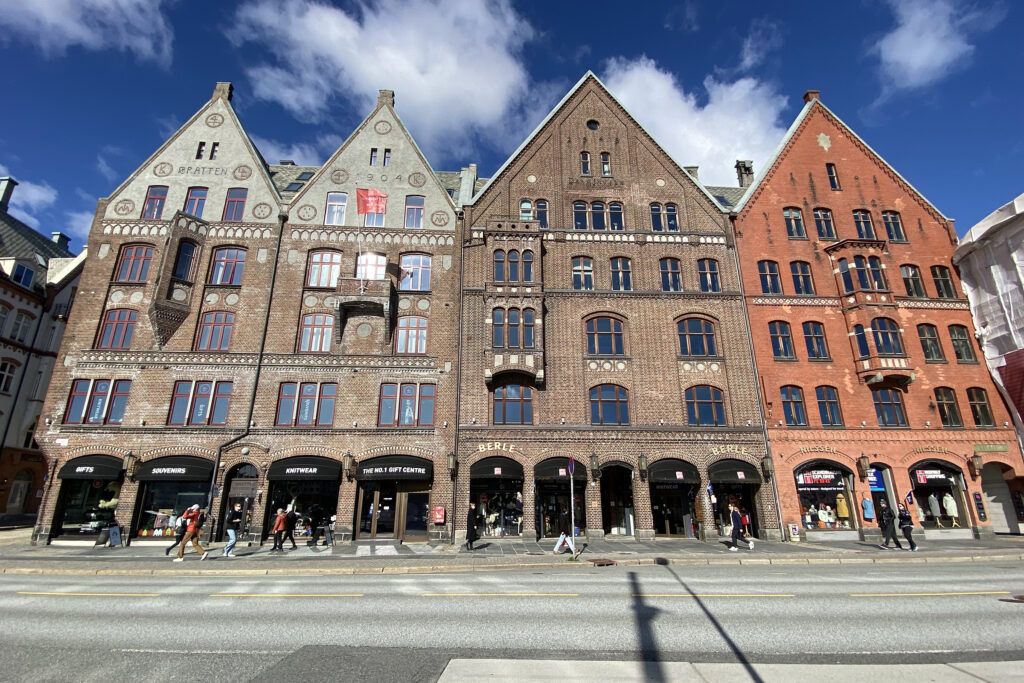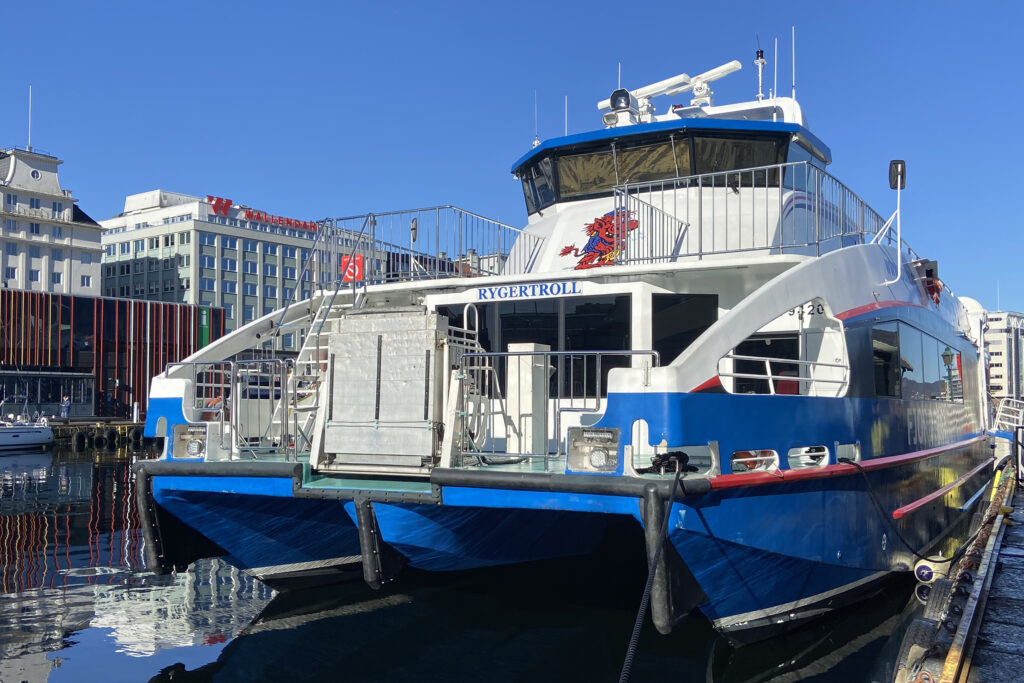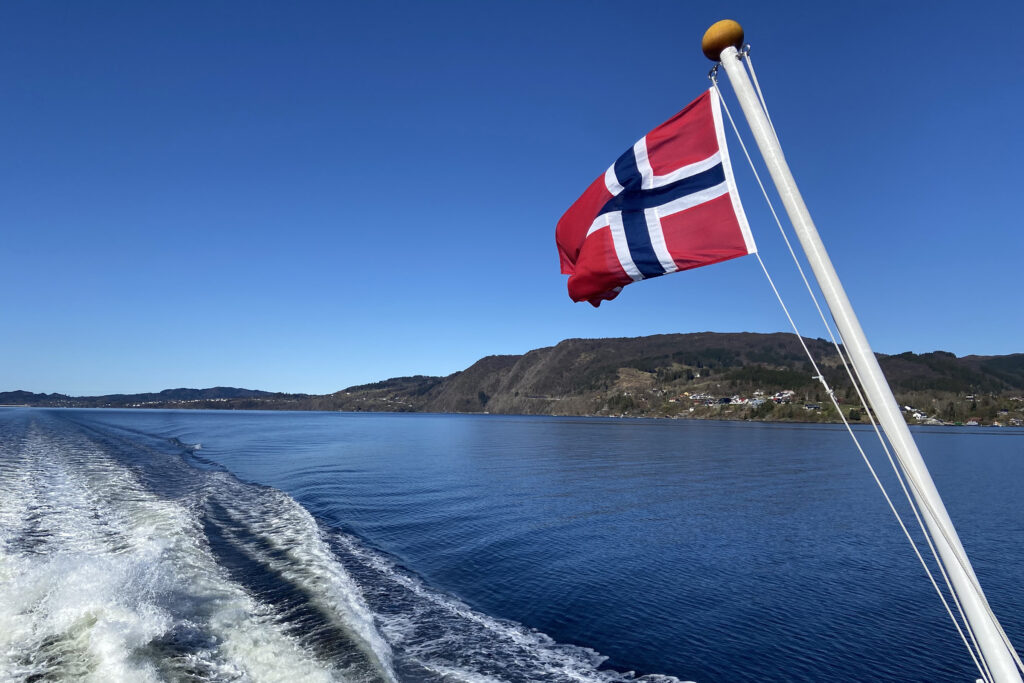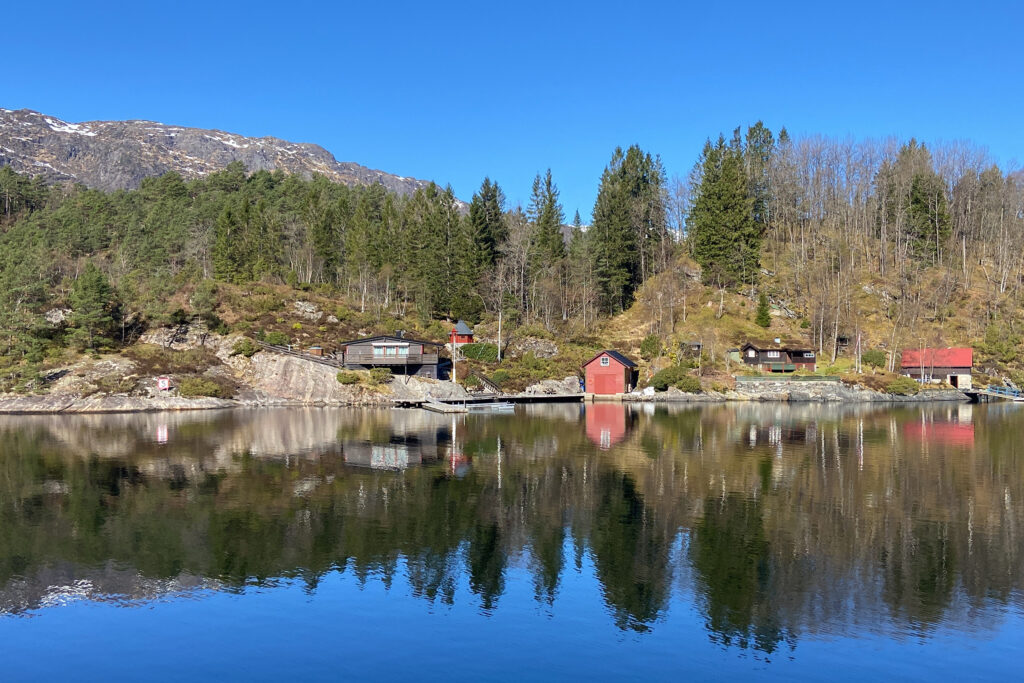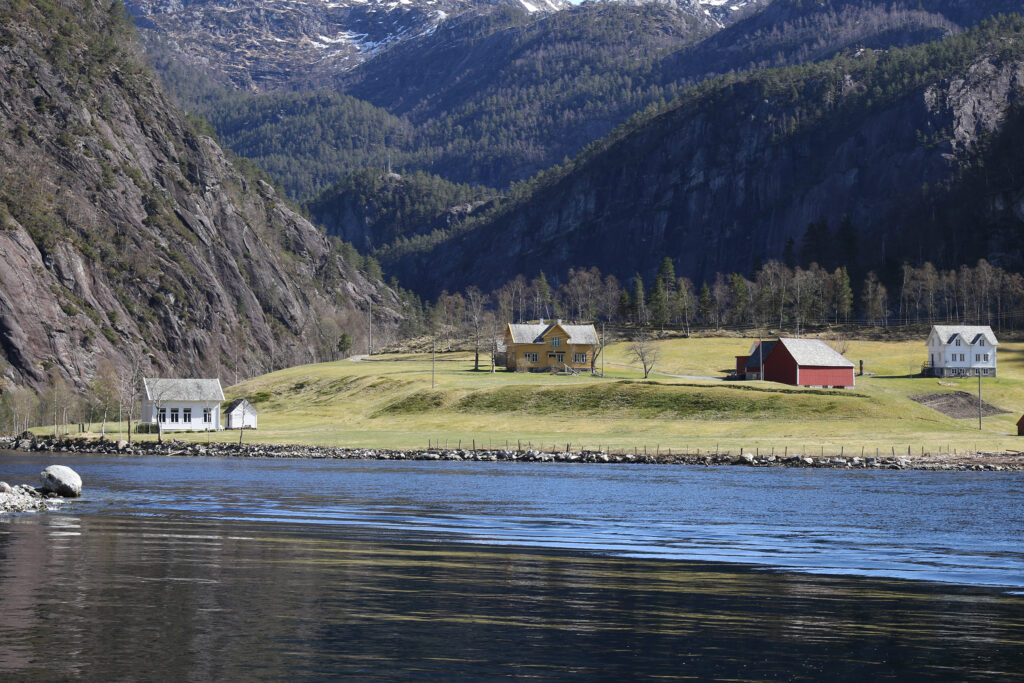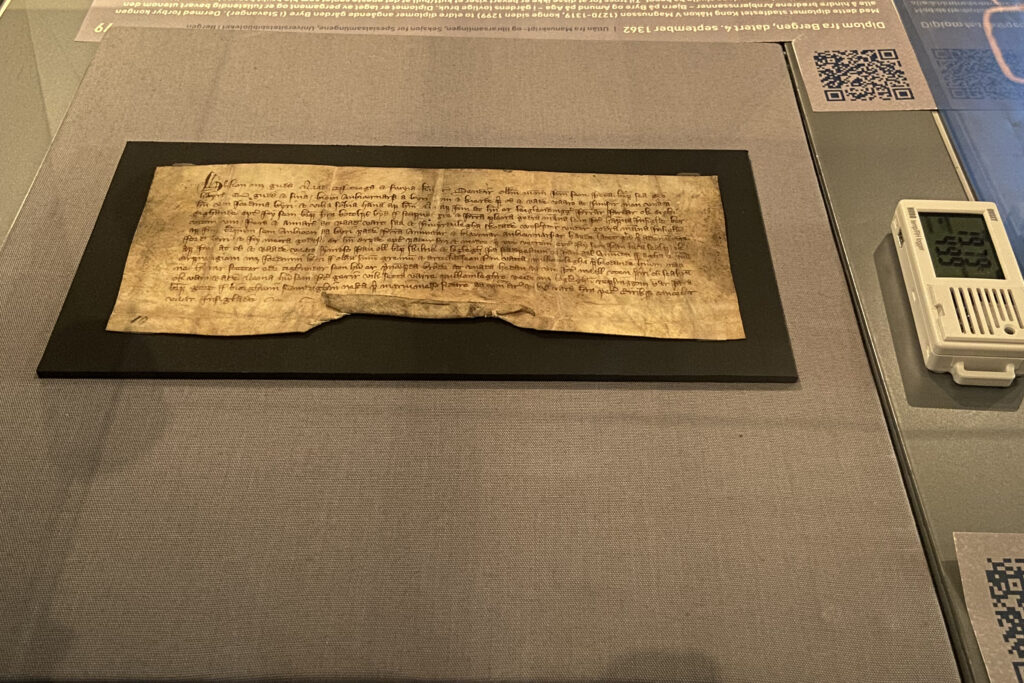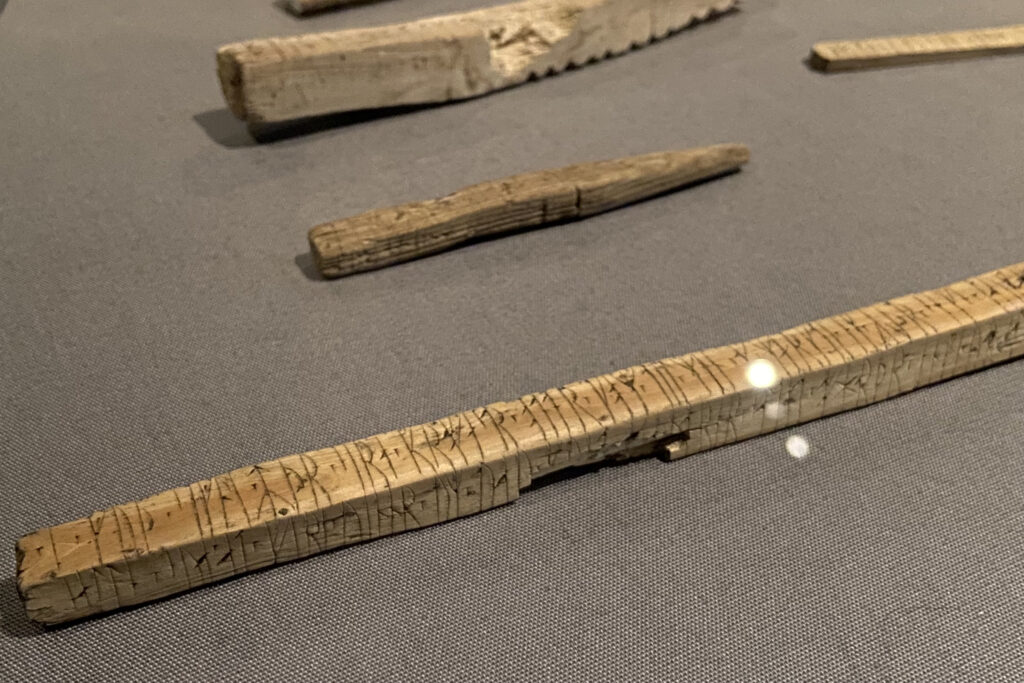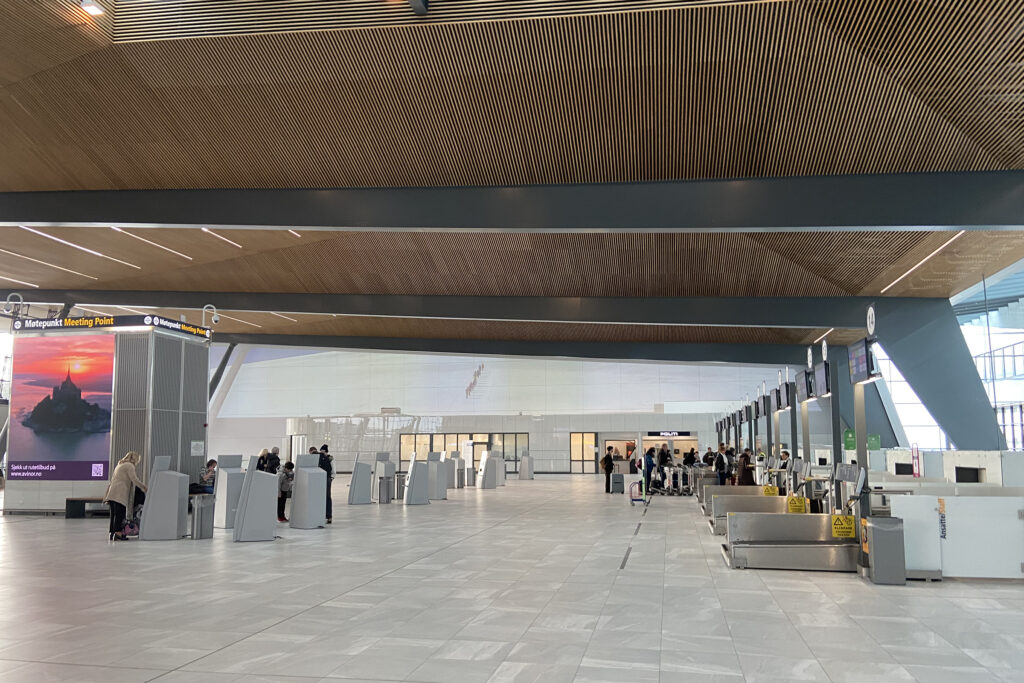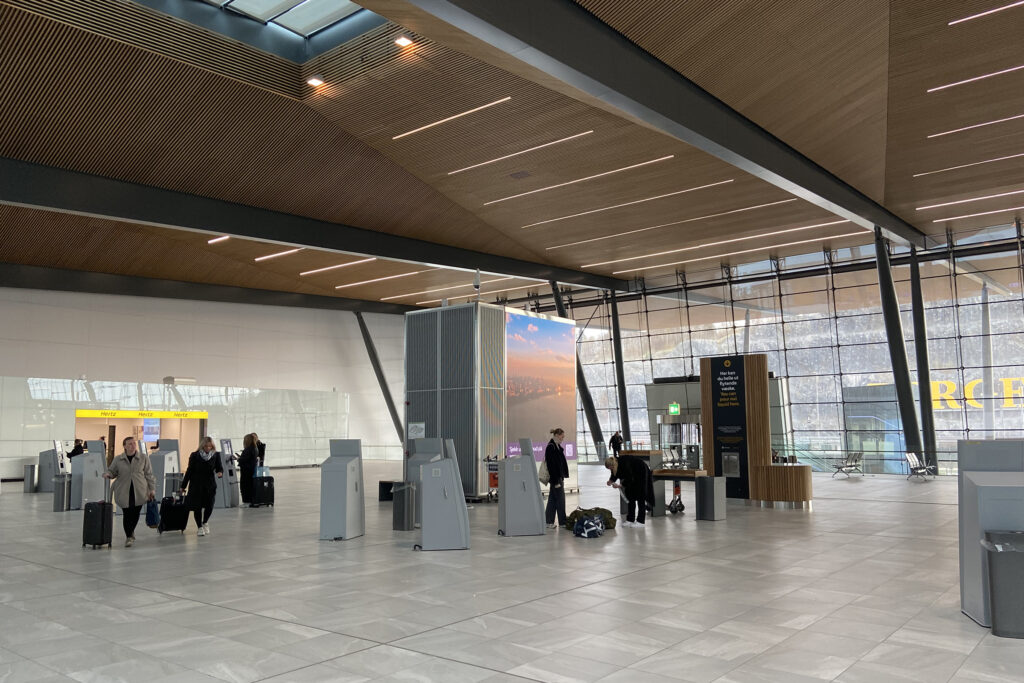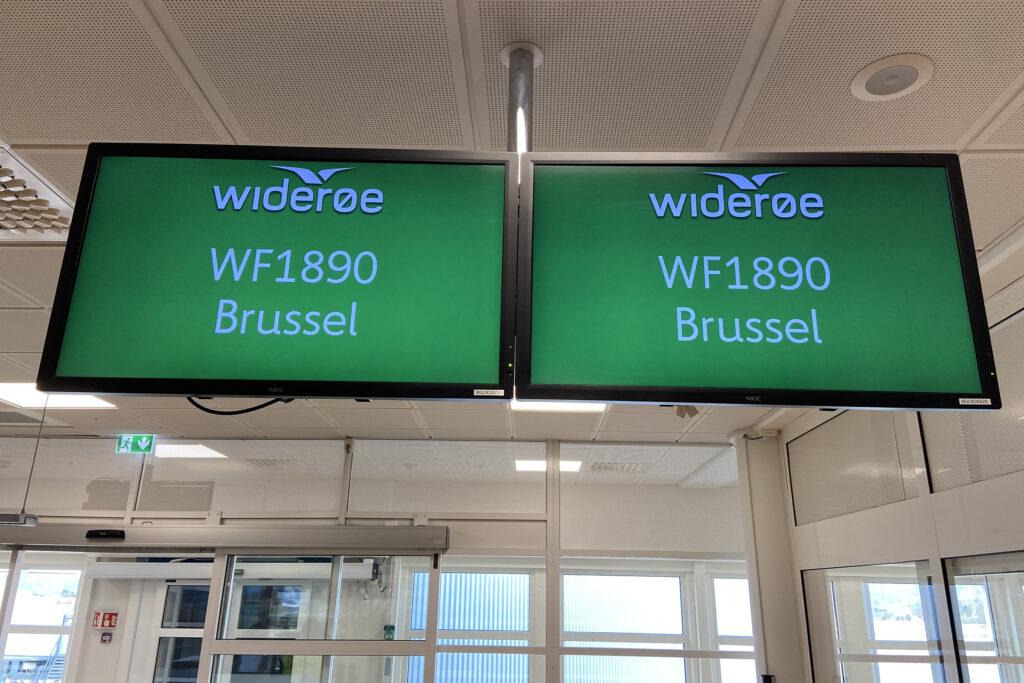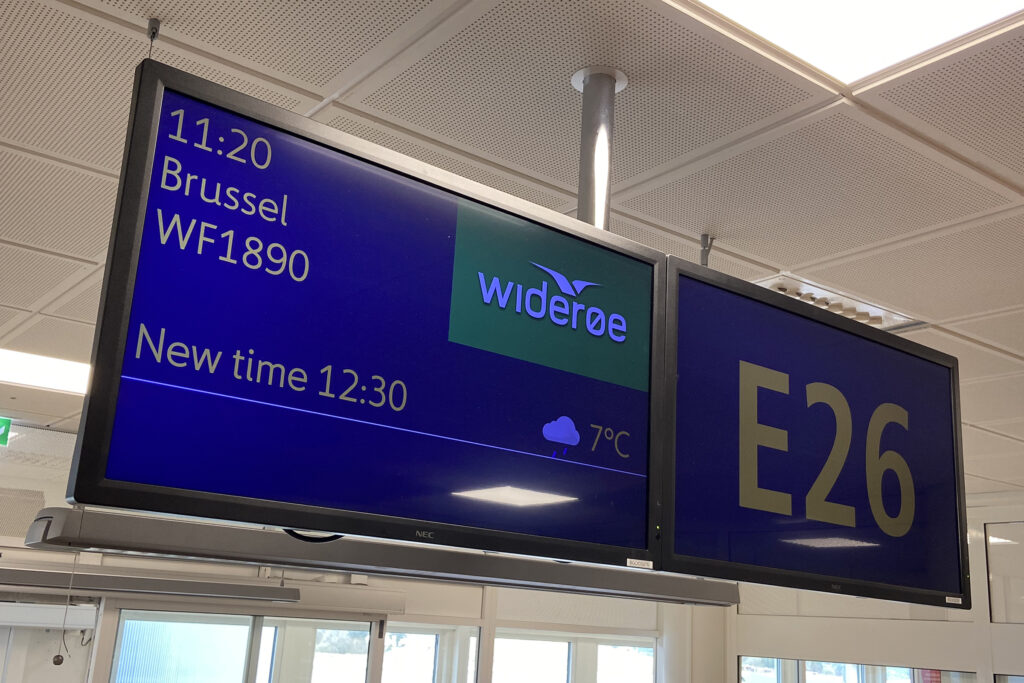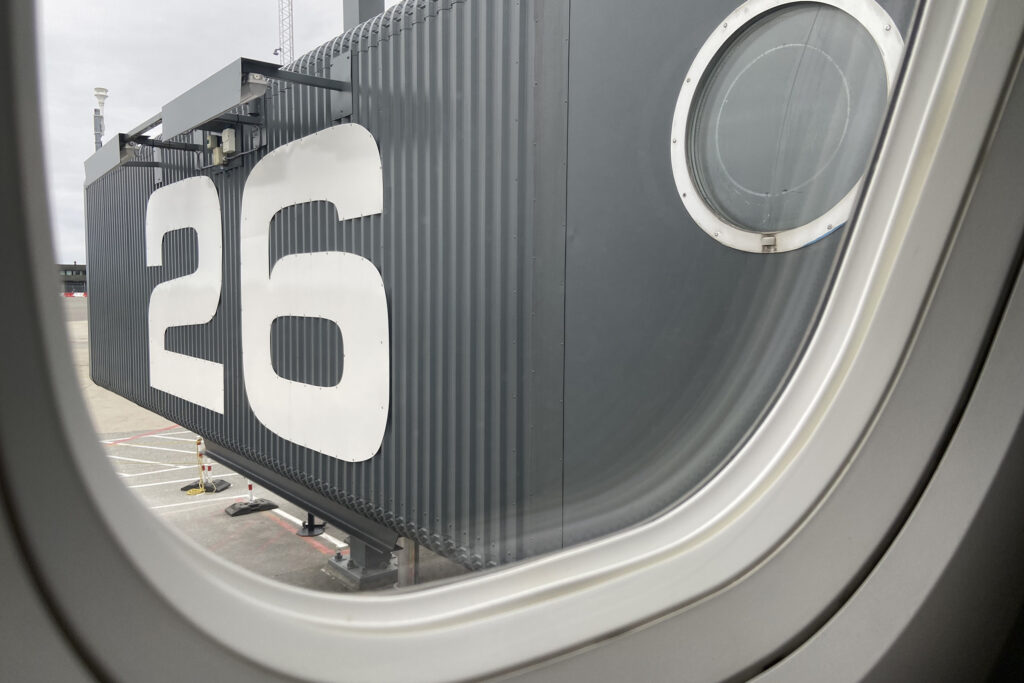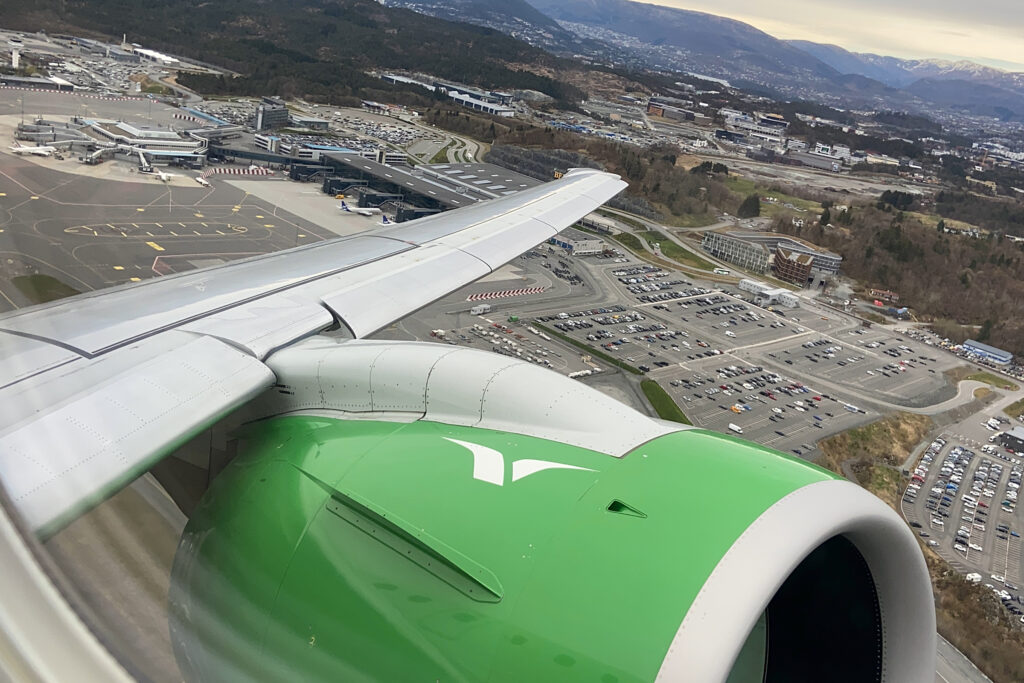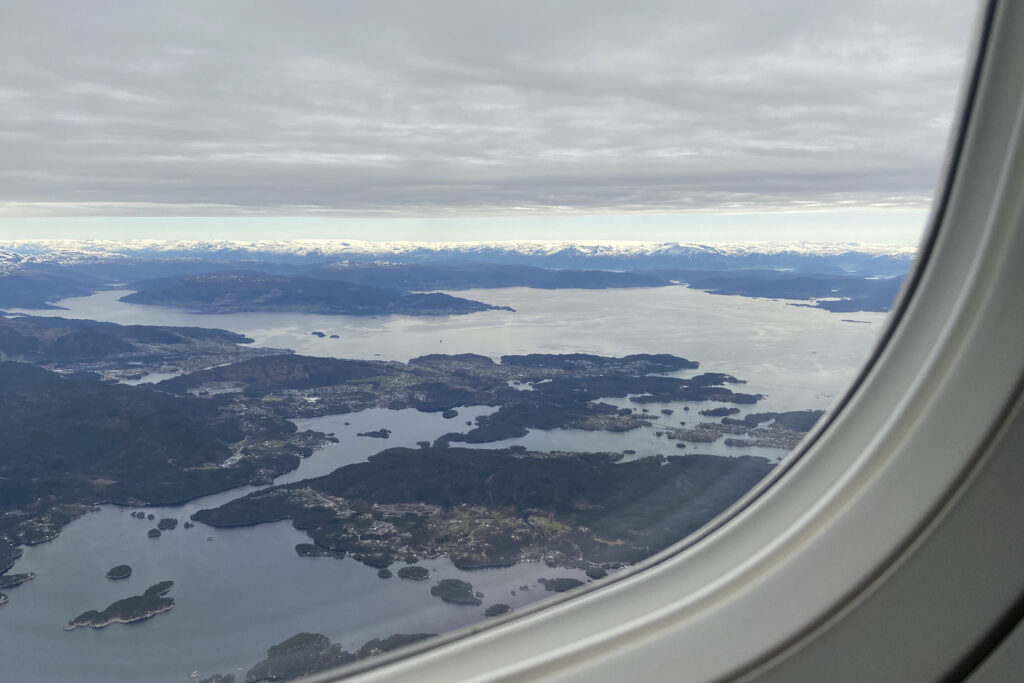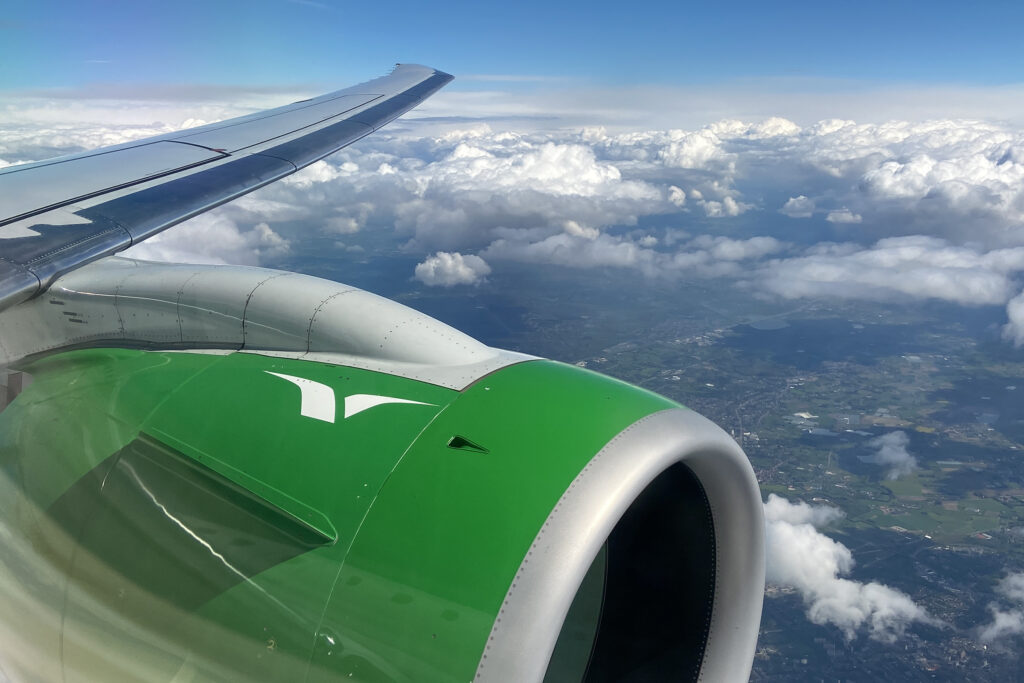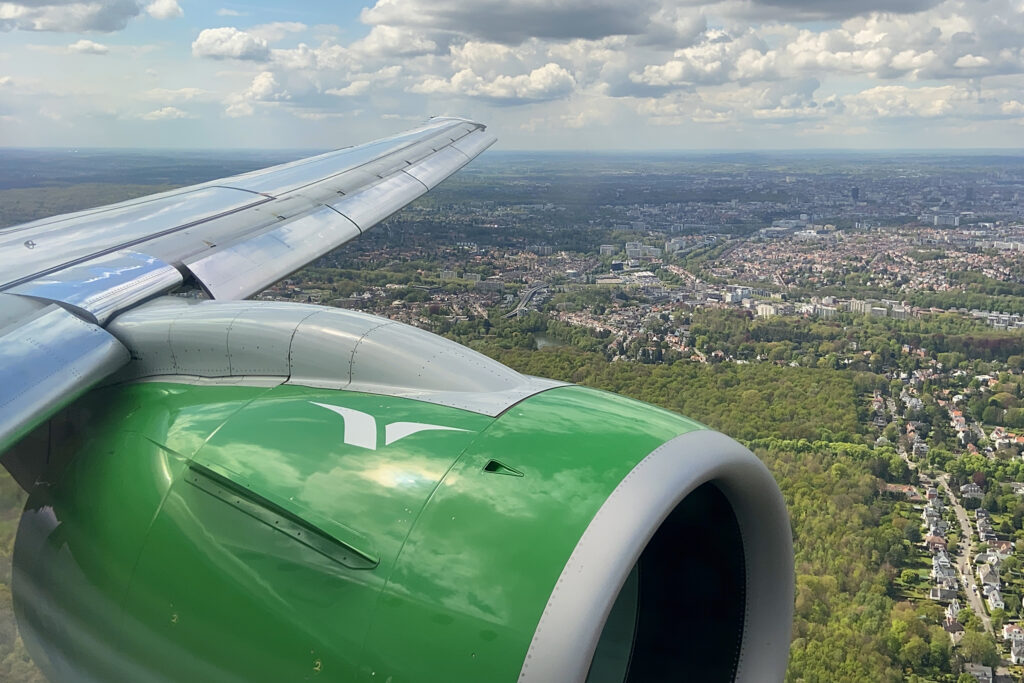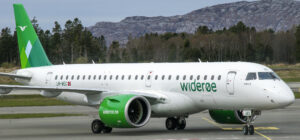
On Friday 19 April 2024, I had the pleasure of flying on a Widerøe Embraer E190-E2 regional jet operating a scheduled flight between Brussels and Bergen. Three days later I flew on the very same Embraer E190-E2 from Bergen back to Brussels.
Widerøe had introduced its brand new route between Bergen and the Belgian capital just one week earlier. The Norwegian airline was one of the six new airlines at Brussels Airport in summer 2024 (the others being Singapore Airlines, Juneyao Airlines, Cyprus Airways, Amelia and Wizz Air). A unique opportunity, not only to fly Widerøe for the very first time, but also to spend a few days in Bergen, the second-largest city in Norway after Oslo.
Here is my detailed trip report, so you can relive this new service between Brussels and Bergen. So fasten your seatbelt, put the table in front of you in the upward position and enjoy this trip report.
Preparations
On Wednesday 15 November 2023, Widerøe announced that it would launch a new route between Bergen and Brussels. The inaugural flight would take place on Friday 12 April 2024. The airline’s Sales and Marketing Manager, Leisure Travel Ms. Kristin Gaustad stated in the press announcement: “We are thrilled to offer this direct gateway to the Norwegian fjords. Bergen offers a stunning diversity from cultural and historic experiences to an impressive scenery. This new flight connection will also make it easy to visit the majestic fjord landscape.”
Widerøe stated that it would operate the route twice per week, i.e. on Mondays and Fridays. This would allow travellers to take a well-deserved city break in the fjord capital, or extend their vacation over several days to explore more of the Norwegian fjord region.
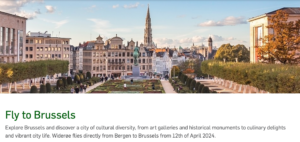
Online advertisement for the new flight between Bergen and Brussels.
Even though I had already been to Norway before, I had never been to Bergen or explored the Norwegian fjords. Hence, this new route seemed like the perfect opportunity to plan a trip to Bergen and the magnificent landscapes that surround the city. The route schedule for the new service would enable me to fly from Brussels to Bergen on Friday, stay for three nights in Bergen, and fly back to Brussels on Monday. Unfortunately, due to other commitments it was not possible for me to book a ticket on the inaugural flight from Brussels to Bergen. Nevertheless I had a free schedule the next weekend, allowing me to fly from Brussels to Bergen on Friday 19 April 2024 and fly back from Bergen to Brussels on Monday 22 April 2024. I did not hesitate and on Tuesday 28 November 2023 I booked a return ticket in Economy Class for EUR 210,43. The ‘Smart’ ticket fare included one piece of baggage (max. 23 kg), one carry-on bag and one personal item but no pre-selected seats (and for some reason, I was unable to buy pre-selected seats on top of my normal ticket fare during the booking process). The ticket was refundable within 24 hours after booking and a schedule change would cost me NOK 650 (about EUR 60) + ticket price difference. Other ticket types offered by Widerøe are Full Flex, Flex and Mini.
Here are the main characteristics of each ticket type offered by Widerøe at moment of writing:
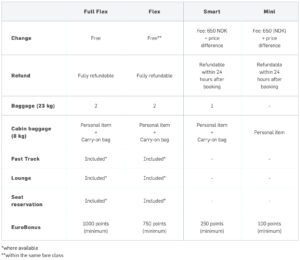
Widerøe ticket types.
So, after I had finalised my booking, this is how my itinerary from Brussels to Bergen and back to Brussels looked like:
|
Day |
Flight |
Origin |
STD |
Destination |
STA |
Aircraft Type |
|
19APR2024 |
WF1891 |
BRU |
13:45 |
BGO |
15:40 |
E290 |
|
22APR2024 |
WF1890 |
BGO |
11:00 |
BRU |
13:00 |
E290 |

Widerøe booking confirmation.
I also booked a three night stay in a standard room at the Scandic Torget Bergen Hotel, located in downtown Bergen by the water of Bergen Havn and within short walking distance of many interesting cityscapes that Bergen is known for, such as Bryggen (a historic Hanseatic harbour district featuring multiple unique wooden buildings and a UNESCO World Heritage site).
A few weeks later I also booked a Fjord Cruise with Rødne Fjord Cruise at a cost of NOK 851 (about EUR 80) . This scenic boat cruise would take me on Sunday 21 April 2024 from Zachariasbryggen in Bergen (only a 100 meter walk from my hotel) all the way up to the Norwegian fjords and back to Bergen. There’s probably no better way to explore the Norwegian fjords for the very first time, right?
Flight Schedule Change
On Tuesday 19 December 2023 I received an email from Widerøe’s Kundesenter (the airline’s customer support department) to inform me that my flight schedule had changed. After only reading the email subject line ‘Your Itinerary Has Changed’ I immediately started panicking. I thought that there would be a very significant change to the flight schedule and that my plans for a long weekend in Bergen would basically fall into pieces. The flights would probably have been cancelled alltogether or rescheduled to a Tuesday flight BRU-BGO and a Wednesday flight BGO-BRU or so.
Fortunately, when reading the entire email, I noticed that there had only been a minor flight schedule change. In fact, the flight from Brussels to Bergen had been pushed from a 13:45 departure to a 14:05 departure. The flight from Bergen to Brussels had been pushed from a 11:00 departure to a 11:20 departure. So eventually, nothing to really worry about. The email also stated the reason for the flight schedule change as being ‘a time change or cancelled flight(s)’.

Flight schedule change email.
Seat Reservation
As already mentioned earlier, I had been unable to buy pre-selected seats for my Widerøe flights when booking the return ticket. On Sunday 21 January 2024 I retrieved my booking on the airline’s website and tried once again to buy pre-selected seats. Initially it did seem to work this time, but when clicking on seat of my choice, I got a blank page. I gave it another try using a different web browser and even a different computer, but nothing worked.
I had no other option but to send an email to Widerøe’s Kundesenter and request them to add the seats to my booking and send me a payment link. Few hours later (just after midnight) I already got a reply from a customer service agent that they had added the seats to my booking and also got a payment link. Unfortunately the payment link was only valid for two hours or so, and next morning when I opened my emails, the link was no longer valid. Hence I had to request a new payment link, which I received promptly. This time I was able to complete the purchase and pay before the payment link expired. Now I was all set to go.
About Wideroe
Widerøe’s Flyveselskap AS, trading by the name Widerøe, is the oldest Norwegian airline. It was founded ninety years ago, on 19 February 1934 by five enthusiastic friends, one of them being Viggo Widerøe, a notable Norwegian aviator and entrepreneur. In its first two years Widerøe operated solely general aviation flights. In 1936 the airline began to operate scheduled seaplane flights. Over the next few decades the airline continued to grow and from 1968 it started to fly to so-called ‘STOLports’ in northern and western Norway using the De Havilland Canada DHC-6 Twin Otter. Later it also introduced the De Havilland Canada DHC-7 Dash 7. During the 1990s Widerøe replaced its entire fleet with De Havilland Canada DHC-8 Dash 8 aircraft.
On 4 April 2018 Widerøe became the launch customer for the Embraer E190-E2 regional jet by introducing the first of three aircraft it had on order, into its fleet. Three weeks later, on 24 April 2018, the airline operated the world’s first scheduled passenger flight with an Embraer E-190-E2 regional jet, a sold out domestic morning flight from Bergen to Tromsø.
Widerøe currently operates flights to 49 destinations in Norway and Europe. The domestic short haul network is central to the airline’s operations, both operated under contract for the Norwegian Ministry of Transport (PSO or ’Public Service Obligations’ routes) in addition to commercial routes. Next to its extensive domestic route network, Widerøe also operates flights to several European destinations such as Dublin, Liverpool, Alicante, Gøteborg, Munich and now Brussels. Today the Widerøe fleet consists of 48 aircraft: 45 De Havilland Canada DHC-8 Dash 8 turboprop aircraft and 3 Embraer E190-E2 jet aircraft. The new route from Bergen to Brussels is operated with an Embraer E190-E2.
Widerøe has an annual turnover of NOK 3.5 billion, carries 2.8 million annual passengers, gives work to 3.500 employees and performs 450 take-offs and landings each day. Together with Widerøe Ground Handling AS, Widerøe Technical Services AS, Widerøe Zero AS, Widerøe Property AS, and Widerøe Asset AS the airline forms the Widerøe aviation group. The company’s head office is in Bodø, Norway. In January 2024 Widerøe was acquired by Norwegian Air Shuttle.
About The Embraer E190-E2
The Embraer E190-E2, nicknamed ‘Profit Hunter’, is a regional jet produced by Brazilian aircraft manufacturer Embraer. It is the one of three member of the Embraer E-Jet E2 family, the manufacturer’s latest generation of four-abreast narrow body regional jets and an incremental development of the original E-Jet family. The other two members of the Embraer E-Jet E2 family are the Embraer E175-E2 and the Embraer E195-E2.
The Embraer E-Jet E2 aircraft family was announced by Embraer in November 2011 as fully revamped versions of the Brazilian manufacturer’s already successful E-Jet family (the E170, E175, E190 and E195). The new generation of regional jets would not only feature the new and more fuel-efficient Pratt & Whitney PW1900G geared turbofan engine, but also new wings, improved avionics and other improvements such as an updated cabin interior. According to the Brazilian manufacturer the Embraer E190-E2 was designed to deliver the best performance, opening new markets while delivering comfort and sustainable profitability.
The Embraer E190-E2’s first flight was on 23 May 2016. It received its certification on 28 February 2018 and less than two months later it entered into service with launch customer Widerøe. Other operators of the Embraer E190-E2 are – at moment of writing – Air Astana, Air Kiribati, Helvetic Airways, Pionair Australia and Placar Linhas Aéreas.
Embraer E190-E2 specifications (source: Embraer)
Dimensions
- Length: 36,25 m
- Height: 10,96 m
- Wingspan: 33,72 m
Weights & Payload
- Maximum Take Off Weight: 56.400 kg
- Maximum Landing Weight: 49.050 kg
- Maximum Payload: 13.500 kg
- Maximum Usable Fuel: 13.690 kg
Performance
- Max Cruise Speed: Mach 0,82
- Service Ceiling: 41.000 ft
- Range (full pax / long range cruise, typical reserves / 100 nm alternate): 2.850 nm
Typical Seat Capacity:
- Three Classes: 97 seats (9x 36” / 20x 34” / 68x 31”)
- Single Class: 106 seats (106x 31”)
- Single Class: 114 seats (114x 29”)
Widerøe WF1891 BRU-BGO
On the early morning of Friday 19 April 2024, I was all packed and ready to go to Bergen. Since my flight ticket included one piece of baggage (23 kg), I did not only pack my usual Eastpak hand luggage trolley, but also took some extra items in a large travel suitcase, such as a warm winter coat, hiking boots and my new pair of Leki trekking poles. Now I was fully ready for another nice flying experience.
The evening before, on Thursday 18 April 2024, I had already received an email to remind me that my flight WF1891 was open for check-in. I clicked on the ‘CHECK IN’ button in the email message and was redirected to a personal booking page on the Widerøe website where I was able to check-in in just a few minutes. I retrieved my boarding pass and put it in my Apple Wallet. Nevertheless, I would still have to drop off my large travel suitcase at the check-in desk at the airport Departures hall.
Back to Friday 19 April 2024. Just before lunchtime I took a train to Brussels Airport, where I arrived about 16 minutes later. This would give me a comfortable two hours to check in my large travel suitcase, have some lunch after passing the security check and relax a bit before making my way to the gate. As usual I followed the signs to the Departures hall of the airport and looked at the iconic departures information board (or the ‘split-flap board’ as it is called by some Brussels Airport employees) to see where I could drop off my bag (did you know that this information board weighs 3.600 kg and features 110.016 flaps?). I noticed that the check-in desks for the Widerøe flight to Bergen were located at check-in row 14, which is all the way in the back of the Departures hall. In fact, they were inside the refurbished old Departures hall which is located adjacent to the main Departures hall and now mainly used by TUI Airlines Belgium and some low-cost airlines such as Air Algerie and AJet (formerly AnadoluJet).
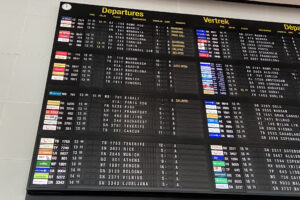
The famous split-flap board at Brussels Airport. Note the departure announcement for Widerøe flight WF1891 to Bergen.
So I went to the very end of the old refurbished Departures hall and just a few minutes later I was standing in line for the check-in of my Widerøe flight from Brussels to Bergen with only about 20 or 30 other passengers in front of me. It had already been quite a while since I queued for a check-in desk since I try to travel with only my hand luggage trolley and a personal item as much as possible, not only because it is usually (much) cheaper but also because it is more convenient: you arrive at your destination, get off the plane and make your way straight to the airport exit without having to pick up your check-in bags. But since I thought it wouldn’t take too lang, I didn’t bother too much.
The airline’s ground handling partner at Brussels Airport is Alyzia, a ground handling company that started its activities at Brussels Airport in 2020 during the COVID-19 pandemic, as a direct result of the bankruptcy of Swissport Belgium. There were two check-in desks open for my flight from Brussels to Bergen: desks 14.11 and 14.12, each desk being staffed by one Alyzia check-in agent.
After about half an hour, it was finally my turn to check-in for the flight to Bergen. I showed the check-in agent my ID card and stated my name. She weighed my large travel suitcase and in no time it was tagged and I got a printed boarding pass and my ID card.
- Widerøe check-in at Brussels Airport.
- Widerøe check-in at Brussels Airport.
After I passed the security inspection (which also went very fast as it seemed that there weren’t many departures that time of the day), I continued my way through the Connector building, which connects the airport’s main terminal with Pier A (or ‘Concourse A’) – mainly used for Schengen flights – and Pier B (or ‘Concourse B’) – mainly used for non-Schengen flights such as flights to North America and Asia. One of the main eyecatchers of the Connector building is a large model of Tintin’s Moon rocket.
As it was almost 13:00 and I was starting to feel a bit hungry, I continued my way to the Panos sandwich bar ad bought something to eat and drink. I took a seat near the windows offering a panoramic view of the Brussels Airport tarmac. Few moments later I noticed the arrival of my inbound flight, WF1890 BGO-BRU, operated with Embraer E190-E2 LN-WEC. The regional jet, which has landed on RWY 25L just minutes earlier, is one of three Embraer E190-E2s operated by Widerøe. It is the youngest of the three and was delivered to the airline on 22 June 2018, making it almost six years old.
At around 13:30 I arrived at Gate A55, the departure gate for my first Widerøe flight from Brussels to Bergen. There were still some free seats left, which made me curious about the load factor for today’s flight. I tried to make some photos of the Embraer E190-E2 with my iPhone but due to the rather poor weather, some window reflections and the iPhone’s limited optical zoom capabilities, I wouldn’t call this photoshoot a huge success.
- Widerøe Embraer E190-E2 LN-WEC parked at gate A55 at Brussels Airport.
- Boarding screen at gate A55.
According to my boarding pass, I was in boarding group B and boarding would begin at 13:45. And indeed, at 13:42 (so even three minutes earlier than anticipated) a gate announcement was made and passengers of all boarding groups were requested to make their way to the gate and board the aircraft. I made my way to the gate agent and showed my digital boarding pass and my ID card. The agent wished me a nice flight and I continued my way to the jetway connecting the gate with the aircraft.
I boarded the aircraft and received a warm welcome from the senior cabin crew member. Maybe it’s me but occasionally, when boarding an aircraft from a foreign airline, it immediately feels like you’re entering the airline’s home country. This was one of those moments. I don’t exactly know why but it really felt like I had just left Belgium and had already entered Norway.
- Special ’90th Birthday’ sticker on cabin door L1 of Widerøe Embraer E190-E2.
- Boarding Widerøe Embraer E190-E2 LN-WEC.
I entered the aircraft cabin and made my way to my seat for today’s flight, which was seat 04F. As I was one of the first passengers to board the aircraft, there was still plenty of space left in the overhead lockers to put my hand luggage trolley. After I stowed away my trolley I sat down in my seat and immediately felt relaxed and at home, maybe because of the extra legroom.
The Widerøe Embraer E190-E2 is configured to seat up to 110 passengers in an all-Economy Class configuration. The seats in the front of the cabin (rows 01-10) offer extra legroom and seat row 11 is an emergency exit row. Every seat is equipped with power outlets. The seats do not feature an inflight entertainment (‘IFE’) system. To be honest, I don’t really mind since I usually I use my own device for watching movies, TV series or listening to music or my favourite podcast show while flying. The only thing I can not watch on my device is the Airshow moving map. Widerøe may have found the perfect solution for this: the airline offers a complimentary entertainment system on board its Embraer E190-E2 aircraft. In order to access this entertainment system, passengers must use their own device, put it in airplane mode, connect to the aircraft’s wifi network called ‘wideroe###’ and navigate to a dedicated website (‘wideroe.everhub.aero’) via a web browser. Passengers can then enjoy free movies, TV-shows, games, flight information and much more.
- Safety card – front.
- Safety card – back.
Boarding was completed in less than ten minutes and at 13:50 a cabin crew member indeed made the announcement ‘boarding completed’. There were still quite a lot of empty seats in the first ten rows equipped with extra legroom, but the cabin in the back appeared to be quite full for today’s flight. I think the load factor for the flight must have been around 60%, with around 50 passengers in the back of the cabin and 10 passengers occupying seats in the front of the cabin.
- Economy Class seat with extra legroom.
- Economy Class seat with extra legroom.
- Cabin view during boarding.
- Cabin view during boarding.
Few moments later, the doors of our Embraer E190-E2 were closed and we were welcomed by the flight crew and cabin crew members. At 14:06 (i.e. just one minute behind our scheduled time of departure of 14:05) our aircraft pushed back from the gate with the nose pointing towards the east. I had a good view of the north side of Pier B and noticed that some construction works were going, making multiple gates unavailable. During pushback I could hear our two engines coming to life as the flight crew started the two Pratt & Whitney PW1919G geared turbofan engines. After two successful engine starts and after running the before taxi checklist (including a check of the primary control surfaces), our aircraft was cleared to taxi to RWY 25R. The pilot flying gently advanced the thrust levers and our Embraer E190-E2 started to move.
We taxied to RWY 25R via taxiways R4, OUT-7 and B1. At 14:14 our aircraft arrived at RWY 25R and it appeared that ATC had already cleared us to enter the active runway and takeoff from RWY 25R. The pilot flying aligned our aircraft with the runway axis (244°) and few seconds later both engines spooled up and I could hear the notorious ‘wookie howl’ produced by the two PW1919G engines. Takeoff thrust was set, our Embraer E190-E2 accelerated and after a short takeoff roll, we rotated from RWY 25R. “Goodbye, Belgium!”
It seemed that our flight was assigned a NIK 3G RNAV standard instrument departure (SID) out of Brussels. So after we reached 700 feet AMSL, our Embraer E190-E2 banked to the right and set course for the NIK VOR located near the city of Sint-Niklaas, Belgium. Climb thrust was set, we gained altitude and our regional jet was being cleaned up gradually by retracting the flaps and slats as our speed increased.
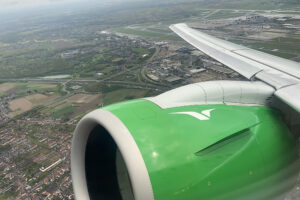
View from seat 04F shortly after takeoff.
I continued to enjoy the views outside of the aircraft as our altitude increased and few moments later we broke through the clouds and could finally enjoy some sun and crisp blue skies. As I sat in the front section of the cabin, I could clearly see the details of one of the Pratt & Whitney PW1919G engines.
In the meantime we had already reached FL100 and continued our climb. At 14:36 we were flying abeam the city of Alkmaar, The Netherlands near the Dutch coastline and we had almost reached our cruising altitude of FL400. The cabin crew began their inflight service by offering all passengers free coffee or tea. I kindly refused the offer since I don’t drink any of these two hot drinks. I didn’t care for asking a cup of still water instead, since I did that few years ago on a Finnair flight (operated by Norra) and eventually had to pay for it.
Next, I decided to try the complimentary entertainment system on board our Embraer E190-E2. First I tried to connect my iPone to the wifi network called ‘wideroe###’. Instead of making an instant connection, I got a request to enter a password. I didn’t see a password on the info leaflet and the cabin crew members were still busy with their inflight service. I tried a few passwords without success. I also tried to enter ‘wideroe###’ which initially did seem to work ,but unfortunately I could not open the dedicated website ‘wideroe.everhub.aero’. Quite a bummer to be honest, as this meant that I would not be able to check out Widerøe’s inflight entertainment system. Fortunately, the best inflight entertainment is still the magnificent outside view from an aircraft window, right?
- Window view.
- Window view.
At 15:00 we were cruising high above the North Sea and the cabin crew had finished their inflight service, so I decided it was time to make a walk to the back of the cabin and see how the load factor was and if there were any free window seats left for making some videos. To my surprise most seats appeared to be occupied, as opposed to the many free seats in the front of the cabin. Nevertheless I did find a free window seat on the very last row in the back, so I sat down for a brief moment and made some videos. About five minutes later I moved back to the front of the cabin and made a quick visit to the toilet in the front of the cabin. The toilet was very clean and tidy and it had all the typical aircraft toilet amenities. There was also a small zip bag with Sani-Com pre-moistened multi-purpose cleaning towels hanging on the coat hanger of the toilet door.
- Toilet.
- Toilet.
I went back to my seat and continued to enjoy the outside view and watch some videos on my iPad. About ten minutes later I noticed that the screen in the front of the aircraft just above the two jump seats, a screen which is typically used by the cabin crew members to manage the aircraft cabin (lighting, attendant calls, cabin audio,…) was now displaying the Airshow moving map. A nice additional feature for passengers not using the complimentary inflight entertainment system (or not getting connected to the aircraft network).
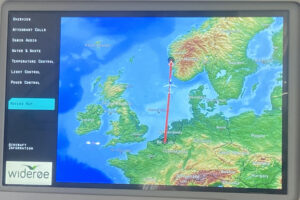
Enroute from Brussels to Bergen.
Few moments later the cabin crew members started their tax free shopping tour. I did not buy anything (not sure where I could find a list of available items, I presume it’s also available in the Widerøe inflight entertainment system). Oh well, I can’t even recall when was the last time that I bought a tax free item on board of an aircraft, so not a huge loss.
- Inflight menu.
- Inflight menu.
- Inflight menu.
- Inflight menu.
At 15:28 we had reached the Norwegian coastline and our top of descent (TOD). The two Pratt & Whitney PW1919G geared turbofan engines spooled down as thrust was reduced to begin our descent into Bergen Flesland Airport. Ten minutes later, we passed FL200 and continued our descent over the Norwegian fjords (invisible due an multiple overcast cloud layers). The flight crew made an announcement and stated that we would be landing in fifteen minutes. The cabin crew prepared the cabin for landing and checked if all passengers were ready for landing.
Ten minutes later our Embraer E190-E2 was flying at an altitude of 4.500 feet on a downwind leg for Bergen Flesland Airport’s RWY 17. We continued our descent and made a slow 180 degree left turn to enter base leg and final leg for landing. The gear was extended and flaps were gradually extended for landing as our speed decreased. We finally broke through the clouds and I got my first glimpse of the Norwegian fjords. Hooray!
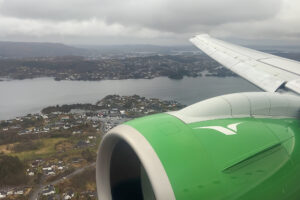
On final approach for RWY 17 at Bergen Flesland Airport.
At 15:53 we landed on RWY 17. Spoilers were extended and brakes were used to reduce our speed. It appeared to me that no reverse thrust was used to slow down our regional jet, most probably since there was sufficient runway available, making it unnecessary for the crew to use reverse thrust as it increases fuel consumption as well as engine wear and tear. We vacated RWY 17 via TWY A6 and as the flight crew retracted the spoilers, flaps and slats we taxied to our assigned arrival gate.
At 15:56, four minutes ahead of our scheduled arrival time of 16:00, Widerøe Embraer E190-E2 LN-WEC arrived at stand 28 (gate D28) located at the terminal which is mostly used for international flights. The aircraft came to a complete stop, the parking brake was set, the two engines were shut down and the fasten seatbelt sign was switched off. The jetway was connected to the aircraft and few moments later the cabin door was opened. Passengers stood up, packed all their personal belongings and got ready to leave the aircraft. Another flying experience had (almost) come to an end.
Before leaving the Embraer E190-E2 however, I waited until most other passengers had disembarked and kindly requested the cabin crew members if it was possible to make a quick visit to the flight deck. This was approved and so few moments later I was greeted by the Captain and First Officer. I noticed that the First Officer also knew that today’s flight was only the third flight between Brussels and Bergen, after the inaugural flight on Friday 12 April 2024 and the second flight on Monday 15 April 2024.

Cockpit of Widerøe Embraer E190-E2 LN-WEC after flight WF1891 from Brussels to Bergen.
Unfortunately, after the brief conversation with the flight crew, it was also time for me to leave the aircraft. I thanked the flight crew and cabin crew for the good service and wished them all the best. I disembarked the aircraft and made my way to the baggage reclaim area of the airport. I walked towards the baggage belt used for the flight from Brussels and after just a few minutes waiting, my checked-in large travel suitcase showed up. Now I was fully ready for my short stay in Bergen!
- First glimpse of Bergen Flesland Airport.
- Baggage reclaim hall at Bergen Flesland Airport.
Bergen
I left the airport building on Friday afternoon and purchased a ticket for the Bybanen line number 1, a light rail service that runs very frequently between Bergen Flesland Airport and the city center of Bergen (there is also a line number 2 running between Fyllingsdalen Terminal and Kaigaten, also located in the city center of Bergen). A normal adult ticket for Bybanen line number 1 is valid for ninety minutes and costs NOK 44,00 (about EUR 4,00) if purchased beforehand at a ticket machine, via sms or via the Skyss app. When purchasing a ticket via a ticket machine (like I did), the ticket is stored on your credit card, so you don’t get a printed ticket anymore. Definitely a nice way to reduce paper waste, although I’m not sure how this works and if the technology behind this is 100% cybercrime proof.
- Bybanen.
- Bybanen.
The Bybanen light rail service left Bergen Flesland airport at around 16:30 and after making several stops along the way, I arrived at around 17:15 at the final stop Byparken in the middle of the city center of Bergen. After a five minute walk I finally arrived at my hotel, the Scandic Torget Bergen Hotel, located by the water of Bergen Havn.
After a swift check-in, I went to my room and took some rest after a busy afternoon.
I didn’t have to go very far to have dinner: just across the street was the Fisketorget, an indoor and outdoor fish market (outdoor only during the summer months) and a meeting place for merchants since the 13th century. There are also some good restaurants serving a large selection of seafood. I went to the ‘Fjellskål’ restaurant and had a very tasty piece of Norwegian salmon.
- Torgallmenningen.
- Bergen havn.
- Fisketorget.
- Dinner at ‘Fjellskål’ restaurant.
Before I called it a day, I visited Bryggen, a historic Hanseatic harbour district featuring multiple unique wooden buildings, a UNESCO World Heritage site and definitely one of the highlights of Bergen.
The next morning and after a good night’s sleep, it was time to explore Bergen and the magnificent landscapes that surround the city. I started the day with a tasty breakfast in the Scandic Torget Bergen Hotel. Next, I decided to start my exploration with a walk on Fløyen, one of the seven mountains that surround the city of Bergen. After a short walk from the hotel I arrived at the Fløibanen funicular station. The Fløibanen funicular is one of Bergen’s (and Norway’s) best-known and most visited attractions. It is a light rail service that brings you from the city center of Bergen all the way up to Fløyen. The journey up to Fløyen takes about 5-10 minutes, a one way adult ticket city center – Fløyen costs NOK 90,00 and a return ticket costs NOK 180,00.
As soon as you arrive at the Fløibanen funicular station on Fløyen, you are treated with some epic views of the city of Bergen. Especially in the morning, when the sun is in your back, you can take some great pictures of Bergen. Next to the funicular station there is also a restaurant called ‘Fløirestauranten’, a café that serves food and drinks, a playground for children and a shop where you can buy some souvenirs or other items such as gloves or a cap.

Panoramic view of Bergen from Fløyen.
During the preparations for my trip to Bergen, I had already done some research and found a few websites offering several hiking itineraries on Fløyen, ranging from short, easy family walks to longer and more difficult walks. I decided to go for an itinerary offering the best of both and one that would keep me busy for at least a couple of hours. So I headed into the forest and did the following walk: Fløyen – BT-shelter – Skomakerdiket – via the top of Granbakken – Hardanger- løypen – Fjell-hytten – Blåmansveien – Fløyen. It was a beautiful hike, and especially during the first part it really felt like I was ‘in the middle of nowhere’. I have to admit though that it wasn’t always easy to see where I needed to go and unfortunately I didn’t find any GPX file for the hiking itineraries. But that’s just a minor drawback and overall it was a magnificent hike.
- Fløyen.
- Fløyen.
When I arrived back at the Fløyen funicular station, things had already become quite busy. Nevertheless, I had some lunch at the café before taking the funicular back down to the city center of Bergen.
In the afternoon I went to downtown Bergen, visited some shops (there’s a great comic store called ‘Outland Bergen’) and also had a small photoshoot at Bryggen since the wooden houses were now beautifully lit as the weather was really nice and sunny (apparently that is quite uncommon as Bergen is the city in Norway with the most precipitation). For dinner I went to a beautiful restaurant called ‘Bryggeriet Restaurant’, offering a good variety of dishes including Norwegian delicacies. They also offer a wide selection of beers brewed in their own brewery.
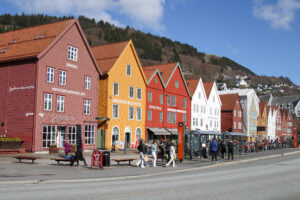
Bryggen.
- Bryggen.
- Bergen Havn.
Sunday was going to be all about the Norwegian fjords as I had booked a Fjord Cruise to Mostraumen with Rødne Fjord Cruise. The cruise would leave at Zachariasbryggen at 10:00 and take about 3,5 hours. The booking confirmation requested to meet at the quay 20 minutes before departure, so at 09:40 I was already queueing. Few moments later one of the boat crew members lowered the bridge and after checking the ticket I could get on the boat.
We left Bergen on time and set pace for the Norwegian fjords. The weather was once again very good with nothing but sun and crisp blue skies, passengers were outside on the upper deck and excited to go and see the fjords, so it sure looked like it was going to be a very nice experience. About ten minutes after departure, as soon as we left the harbour of Bergen, our crew members increased speed to about 20 knots. All of a sudden, the wind speed increased dramatically and the temperature on the upper deck decreased, especially when standing at the front of the boat. All passengers soon realised that it was getting quite cold and windy and that the only way to remain on the upper deck was to sit (or stand up) behind the boat crew cabin, sheltered from the strong wind and lower temperatures. Some passengers went to the lower deck where they could sit inside.
As everyone continued to enjoy the trip, we arrived at the magnificent Norwegian fjords. At certain points along the cruise our boat crew members lowered the speed so we could enjoy the stunning scenery while the crew gave some more info via speakers. We continued our trip through the 27-kilometer long Osterfjord and while navigating through the shallow and narrow Mostraumen straits and after getting some nice close-ups of impressive waterfalls we arrived at the most distant point of today’s Norwegian Fjord Cruise: Modalen, the country’s second smallest municipality with only around 380 inhabitants.
Unfortunately it was time make a 180° turn and head back to Bergen. Together with the other passengers I continued to enjoy the magnificent sceneries that the Norwegian fjords offer and at around 13:10 our boat arrived back in Bergen.
- Rødne Fjord Cruise.
- Rødne Fjord Cruise.
- Norwegian fjords.
- Norwegian fjords.
By now I started to feel hungry so it was time to get some lunch. I looked for a free spot at the Bryggen terraces and was fortunate enough to find one after waiting for only a few moments. I got a sandwich and had something to drink. After my lunch I decided to visit the Bryggens Museum. This is a very interesting archaeological museum that has hundreds of artefacts on display, most of them findings of the archaeological excavations of Bryggen from 1955. It also contains the foundations of the oldest buildings in Bergen. You can also learn the runic alphabet here, since it has many old wooden rune sticks on display.
- Bryggens Museum.
- Bryggens Museum.
After getting some rest in my hotel room I went back up to Fløyen using the Fløibanen funicular as I had made reservations for dinner at the Fløirestauranten. After dinner, the sun was starting to set and so it was time to head back to the funicular station and enjoy a fantastic sunset over the city of Bergen. After the sunset I went back to the hotel to get some sleep before flying back to Brussels the next morning.
As they say in Norway: “Hei Bergen, takk for en fantastisk tur!”
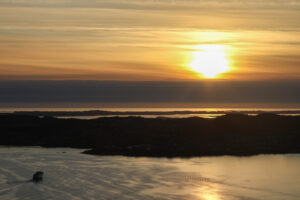
Sunset from Fløyen.
Widerøe WF1890 BGO-BRU
It was still Sunday evening when I received an email from Widerøe to remind me that my flight WF1890 was open for check-in. Once again, in just a few minutes I retrieved my boarding pass and put it once again in my Apple Wallet. Unfortunately, few hours later I got another email, this time from Widerøe’s Kundesenter, to inform me that my flight would be delayed and that the new departure time was now 12:30 instead of the scheduled departure time of 11:20. A far from ideal situation as I already had a tight schedule after landing back in Brussels, but at least I was informed well-ahead of time. Good points for Widerøe, given the circumstances.
On Monday morning 22 April 2024, after a great two-day visit of Bergen, it was time to head back to Belgium. After one last breakfast in the Scandic Torget Bergen Hotel, I packed my bags, checked out from the hotel and made my way to the Bybanen line number 1 light rail service at the Byparken stop. When I arrived at the Byparken stop, there was indeed a Bybanen tram but it didn’t appear that it was about to leave soon. Someone made an announcement in Norwegian and a friendly Norwegian lady translated it into English. Unfortunately it wasn’t good news: due to a road accident the Bybanen was unable to leave and head to Bergen Flesland Airport. Luckily I hadn’t bought a ticket yet.
I decided to head back to the hotel and find an alternative way of getting to the airport. Fortunately the Bybanen isn’t the only means of transportation from the city center of Bergen to the airport. There’s also the so-called ‘Bergen Airport Express Bus’ driving between downtown Bergen and the airport. The nearest stop was just a five minute walk from the hotel and the first bus would arrive in fifteen minutes. So I made my way to the nearest bus stop at Strandkaiterminalen and indeed, few moments later the express bus towards the airport showed up. I put my bags in the bus baggage compartment and bought a ticket from the friendly female bus driver. We were on our way to the airport. The express bus also had to take a different route because of the road accident so the bus would have a slight delay. But eventually we made it to Bergen Flesland Airport.
At 09:20 I entered the impressive new passenger terminal building, built in 2017 and designed by the Nordic Office of Architecture for Avinor, the wholly-owned state limited company under the Norwegian Ministry of Transport and Communications and responsible for 44 state-owned airports including Bergen Flesland Airport. The new passenger terminal building has the capacity to serve 7.5 million passengers per year, includes a new pier with six gates mostly used for domestic flights, separate arrival and departure levels, nine security check lanes for departing passengers and a commercial zone. Passengers leaving on international flights have to walk to the old terminal building after the security check.
The first thing that I noticed upon entering the new passenger terminal building was the lack of manned check-in desks. All I could see were unmanned check-in kiosks and baggage drop-off counters. I had already checked in online the day before, so I opened my boarding pass stored on my Apple Wallet, scanned it at one of the check-in kiosks and less than one minute later I had a printed baggage label for my large travel suitcase. I attached the label to the suitcase and moved on to the drop-off counter. The instructions were clear and easy, and in no-time my suitcase was on its way to the gate. A very convenient way to check-in and drop off bags without a hassle. No stress, no queues, no wasted time. Good job Avinor!
- New passenger terminal building at Bergen Flesland Airport.
- New passenger terminal building at Bergen Flesland Airport.
- Unmanned check-in kiosk.
- Unmanned baggage drop-off counter.
After the security check I moved on to the shops and bars near the domestic gates. Due to the very efficient check-in, baggage drop-off and security check, I had quite some time left before going to the gate. I decided to take a seat at the Rabbagast bar / restaurant. About one hour later, at 11:00, my flight’s gate was announced on the information screens and so I headed to gate E26.
At around 11:35 my inbound flight showed up at the gate. Unfortunately it was the very same aircraft that had operated my Widerøe flight WF1891 from Brussels to Bergen: Embraer E190-E2 LN-WEC. It would have been nice to have one of the other two Embraer E190-E2s operated by Widerøe (LN-WEA and LN-WEB), especially LN-WEA as this aircraft operated the world’s first scheduled passenger flight with an Embraer E190-E2 on 24 April 2018 from Bergen to Tromsø. Today, LN-WEC had just operated flight WF621 from Tromsø to Bergen. It had a scheduled departure time in Tromsø of 08:15 but for some reason it had only left Tromsø at 09:58. Fortunately it appears that Widerøe had already anticipated this significant delay, hence their email message from Sunday evening.
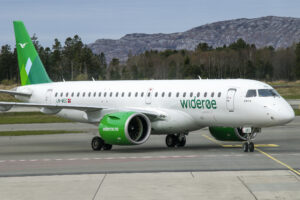
Widerøe Embraer E190-E2 LN-WEC taxiing and making its final turn to stand 26 at Bergen Flesland Airport after operating flight WF621 from Tromsø to Bergen.
Now that the aircraft had arrived at Bergen Flesland Airport and passengers inbound from Tromsø, I got a new email from Widerøe’s Kundesenter, to inform me that my flight would still be delayed but that the new departure time was now 12:05 instead of 12:30 or 11:20. So it appeared to me that Widerøe would try to get my flight to Brussels in the air as soon as possible. Nevertheless, I started to have my doubts about this new departure time as it was already 11:45 by now and passengers were still disembarking the aircraft.
- Boarding screen at gate E26.
- Boarding screen at gate E26.
At 11:57 the gate agent announced that boarding for groups A and B would begin. I was in group B so I stood up and made my way to the agent for a final check before boarding the aircraft. During boarding I was welcomed by the friendly Widerøe cabin crew members. I made my way to my seat for the flight from Bergen back to Brussels, which was seat 04A (the same row as the flight from Brussels to Bergen, but this time I would be sitting on the port side of the aircraft and hoping to have some nice views of Norway).
Other passengers for the flight from Bergen to Brussels also made their way onto the Embraer E190-E2 and at 12:03 (yes indeed, just six minutes after boarding began), a cabin crew made the announcement ‘boarding completed’. Once again, there seemed to be quite some empty seats left in the first ten rows equipped with extra leg room, although not as much as during the flight from Brussels to Bergen. I think the load factor for this flight from Bergen to Brussels was about 70%.
- Boarding Widerøe Embraer E190-E2 LN-WEC.
- Window view from seat 04A.
Few moments later, one of the flight crew members made an announcement and welcomed all passengers onboard of today’s flight to Brussels. At 12:09 the doors of our Embraer E190-E2 were closed and the slides were armed to facilitate an emergency evacuation if needed. We pushed back from gate E26 (in a straight line) and both Pratt & Whitney PW1919G geared turbofan engines were started. After two successful engine starts and after running the before taxi checklist, we were cleared for a taxi to RWY 17. The pilot flying advanced the thrust levers and immediately made a 90° left turn to put our aircraft on TWY W followed by another turn to follow TWY Y to the threshold of RWY 17.
At 12:22 we made a left turn onto TWY A2 and few seconds later we lined up on RWY 17. Our aircraft came to a complete stop but after a few moments our two engines spooled up and I could once again hear the notorious ‘wookie howl’ produced by the two PW1919G engines. Takeoff thrust was set, our Embraer E190-E2 accelerated and after a 33 seconds takeoff roll, we rotated from RWY 17. “Farvel, Norge!”
After takeoff from RWY 17, we continued on runway heading. Climb thrust was set, flaps and slats were gradually being retracted and our speed was increased as we gained altitude. The views from the Norwegian scenery were fabulous. About five minutes after takeoff we crossed 10.000 feet and I could already see some snow covered Norwegian mountains in the background, including the ‘Folgefonna Nasjonalpark’, a 545.2 km2 Norwegian national park in located in Vestland.
- Window view during takeoff.
- Window view during takeoff.
At 12:39 we had just passed Stavanger and reached our top of climb (TOC). By now we were flying at an altitude of FL350 which was remarkably lower than the cruising altitude of the flight from Brussels to Bergen (FL400). The views of the Norwegian fjords and mountains had become even more stunning by now. It was absolutely breathtaking to see the deep fjords, snow-capped mountains and crisp blue skies. Outside views are still the best inflight entertainment.
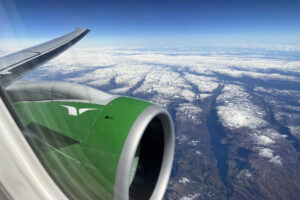
Enjoying some stunning views of the Norwegian fjords and snow-capped mountains.
Unfortunately, it was time to leave these wonderful scenic views behind and soon we were once again cruising high above the North Sea. The cabin crew began their inflight service by offering all passengers free coffee or tea. This was my second Widerøe flight in just four days, so by now I had become quite familiar with Widerøe’s service. Once again, I kindly refused the offer since I don’t drink any of these two hot drinks.
After the inflight service, I decided to watch some videos on my iPad. I didn’t give the complimentary entertainment system on board the Widerøe Embraer E190-E2 a second try (you probably remember the failed first attempt on the flight from Brussels to Bergen), because I simply forgot. Quite a bummer because I really wanted to try it out. But maybe I forgot because I just didn’t really need it at that very moment?
Anyway, we continued our way to Brussels and we were still cruising high above the North Sea. The visibility was good and in the distance I could catch a glimpse of Jutland, Denmark. The cabin crew had finished their inflight service and few moments later they started the tax free shopping tour. As you might already have guessed, I didn’t buy anything.
At 13:17 we reached the Wadden Sea and I could enjoy some great views of the Wadden Islands before our aircraft made a gentle right turn and set course for Belgium. Ten minutes later we reached our top of descent (TOD). The pilot flying reduced thrust and our two Pratt & Whitney PW1919G geared turbofan engines spooled down to begin our descent into Brussels Airport. About twenty minutes later the flight crew made an announcement that we were approaching Brussels and that we would be landing shortly. We entered Belgian airspace and descended through FL170.
We continued to fly in a southerly direction and at around 14:45 we descended through FL080 and right into some thick patches of clouds near Brussels Airport. It appeared that we were approaching Brussels Airport for a landing on RWY 01 (instead of the normal RWY 25L or RWY 25R) due to winds blowing from the northeast.
By now the Embraer E190-E2 was flying west of Brussels on a downwind leg for RWY 01 and the cabin crew had secured the cabin for landing. I was seated on the left side of the aircraft so I could enjoy some magnificent views of Brussels. The pilot flying reduced our speed and flaps were gradually extended. Few moments later, as we descended through 5.000 feet, we made a 180 left degree turn to align the Embraer E190-E2 with RWY 01. During the turn our gear was already being extended. The approach appeared to be a bit bumpy, probably because of some strong wind gusts from the northeast.
- Approaching Brussels Airport.
- On final approach for RWY 01 at Brussels Airport.
At 13:53 we made a soft landing on RWY 01. Spoilers were extended and brakes were used to reduce our speed. Once again I noticed that no reverse thrust was being applied to slow down our regional jet. We vacated RWY 01 via TWY E5 and after a mandatory “Velkommen til Brussel.” message from one of the cabin crew members we taxied to Pier A via TWY R4.
At 13:57, more than thirty minutes behind our scheduled arrival time of 13:20, Widerøe Embraer E190-E2 LN-WEC arrived at stand 151 (gate A51) located at the south side of Pier A. The aircraft came to a complete stop, the parking brake was set, the two Pratt & Whitney PW1919G geared turbofan engines were shut down and the fasten seatbelt sign was switched off. Few moments later, after the jetway was attached to our aircraft, the cabin door was opened. As most other passengers, I stood up, packed all my personal belongings, thanked the flight and cabin crew for a good flight and disembarked the aircraft. My trip to Bergen with Widerøe had come to an end.
Thank you
I would like to thank Widerøe for introducing their new route between Bergen and Brussels. I would also like to thank all flight crew and cabin crew members of my flight WF1891 from Brussels to Bergen and my flight WF1890 from Bergen back to Brussels for their great service. “Takk og farvel!”
22 April 2024

